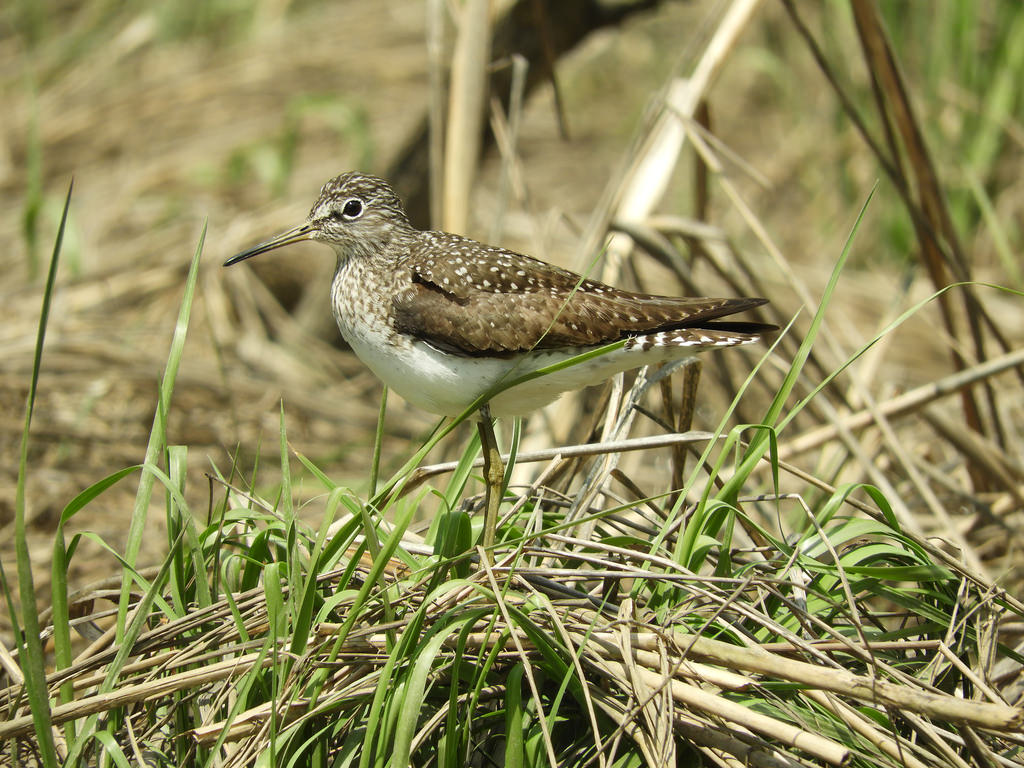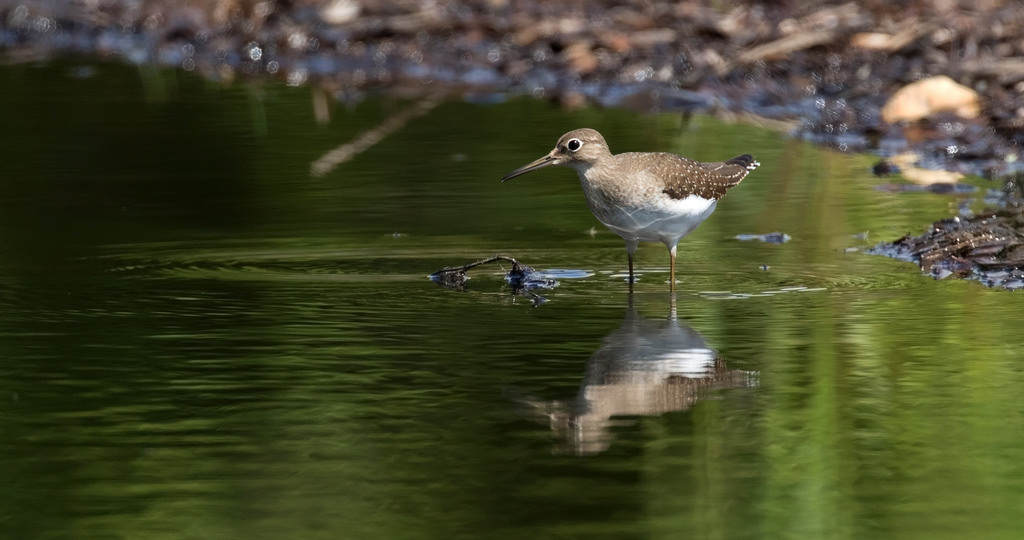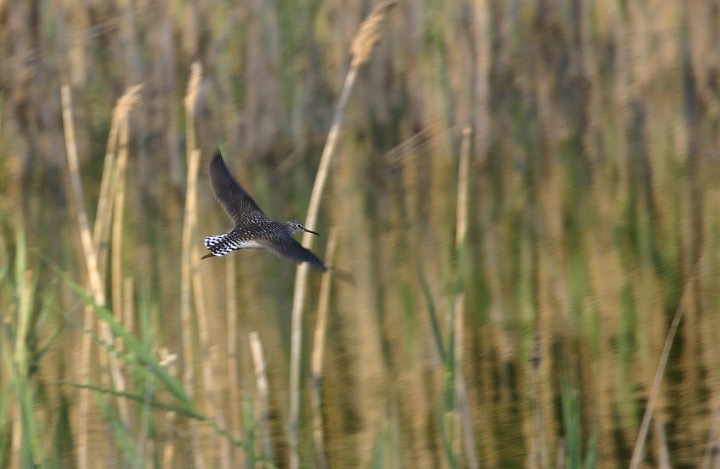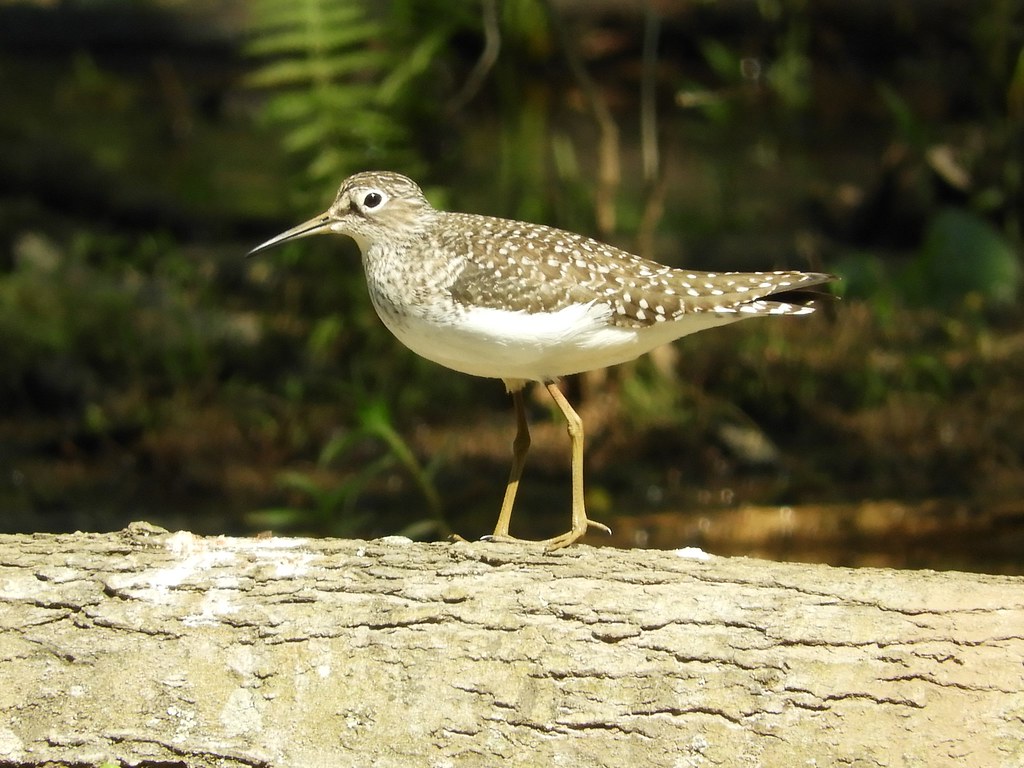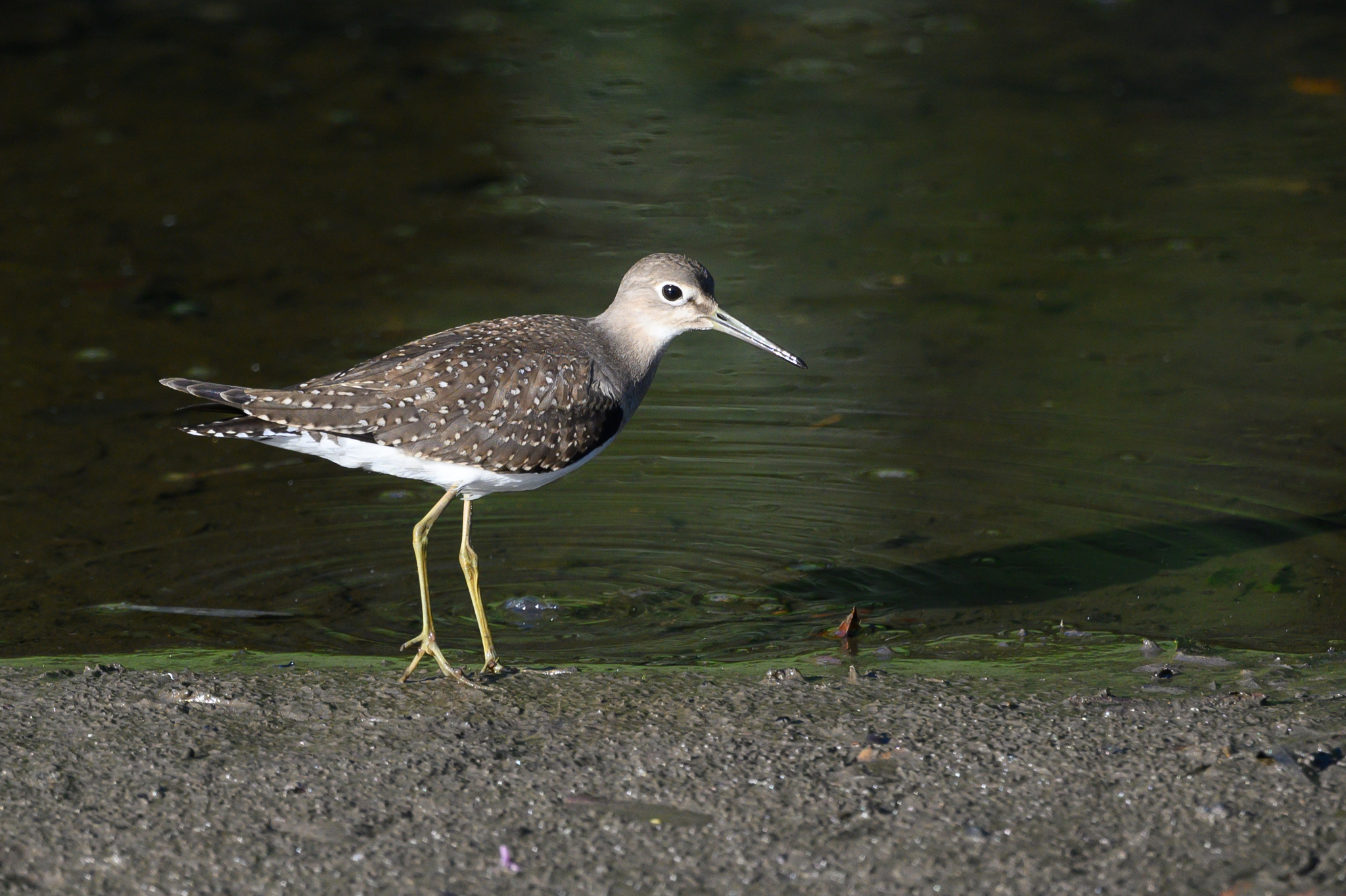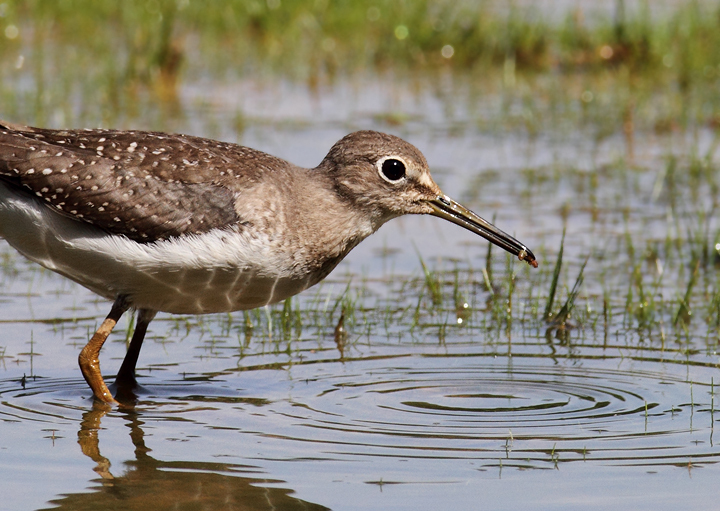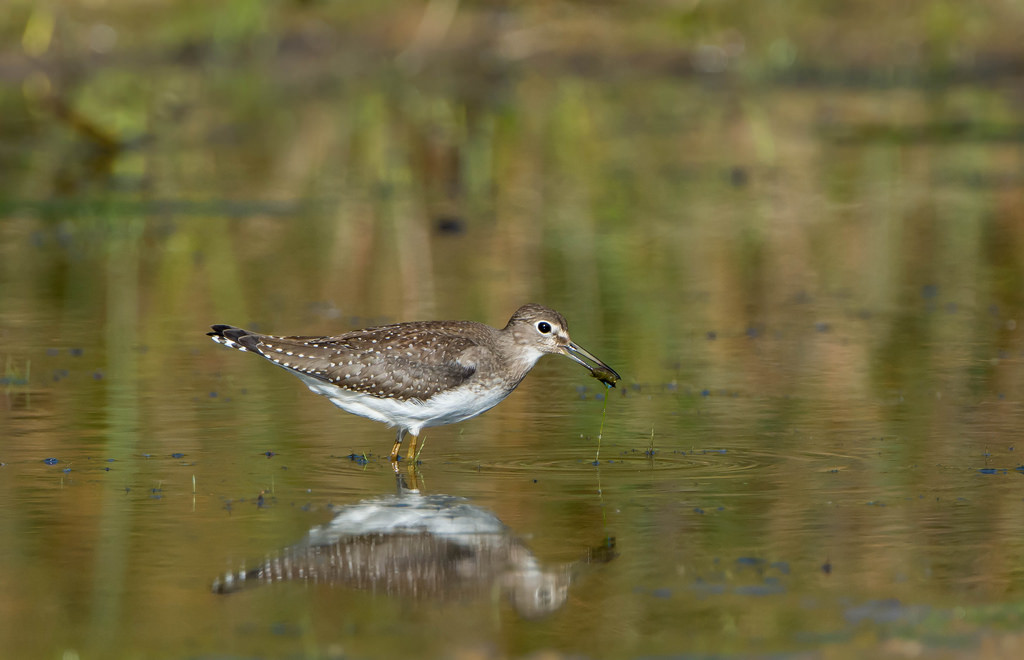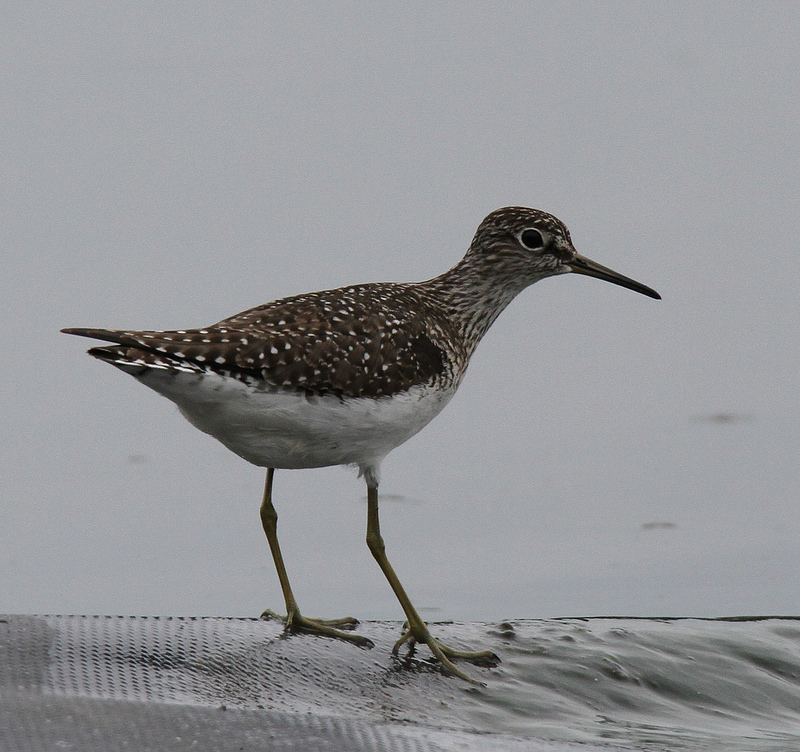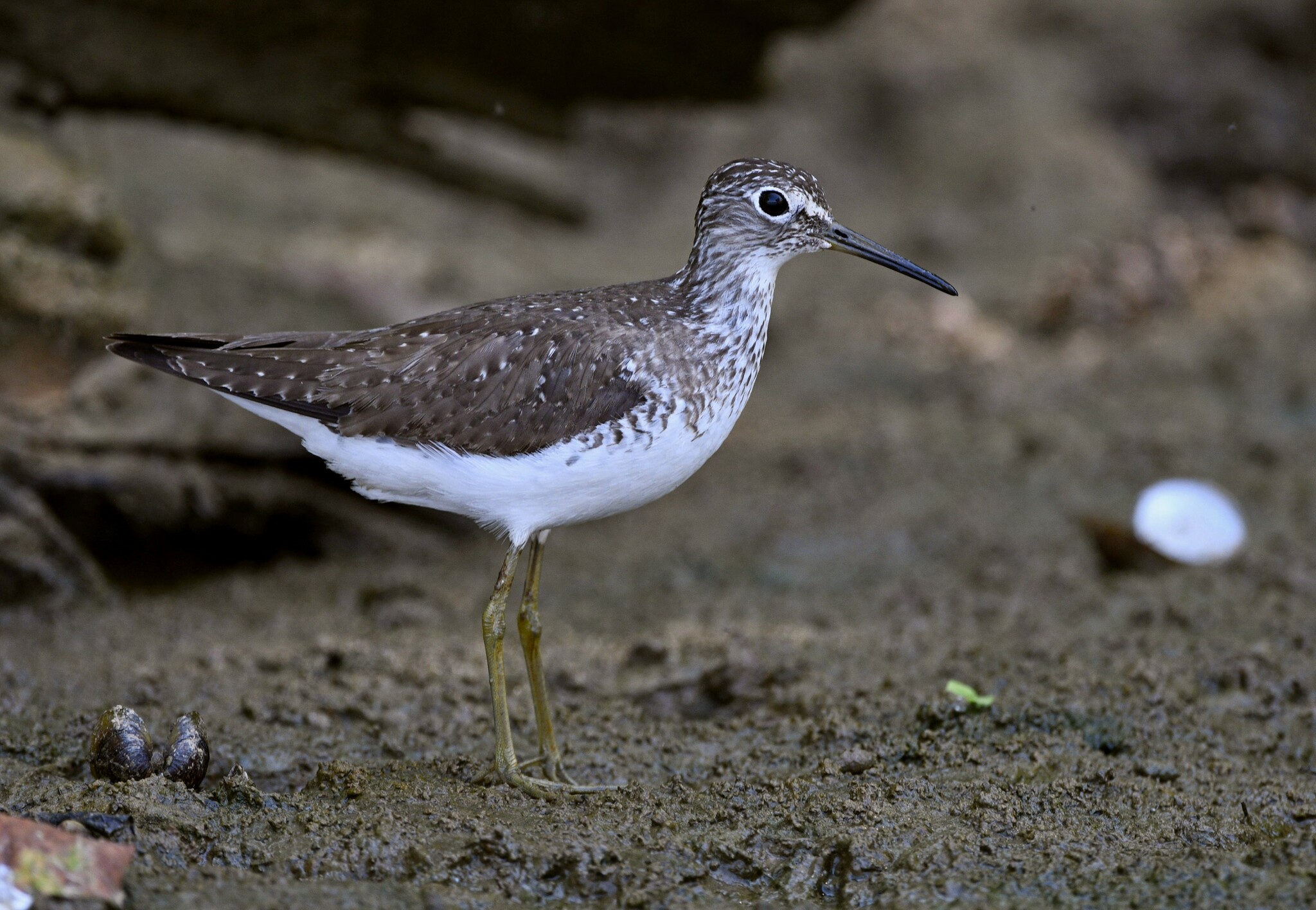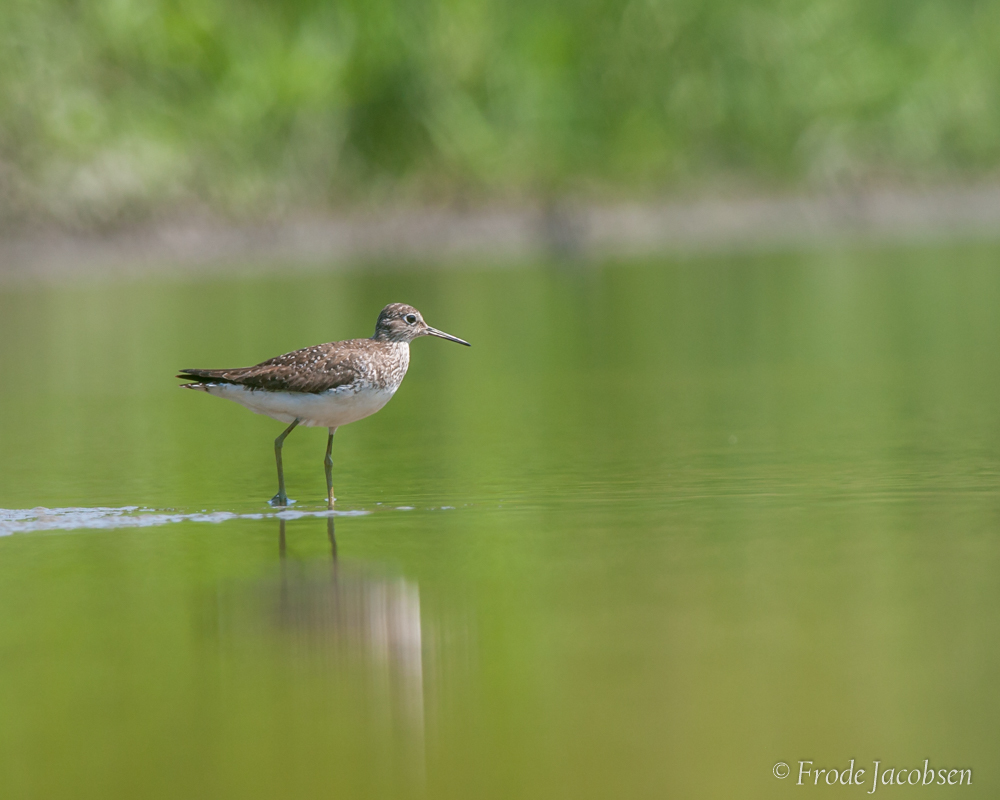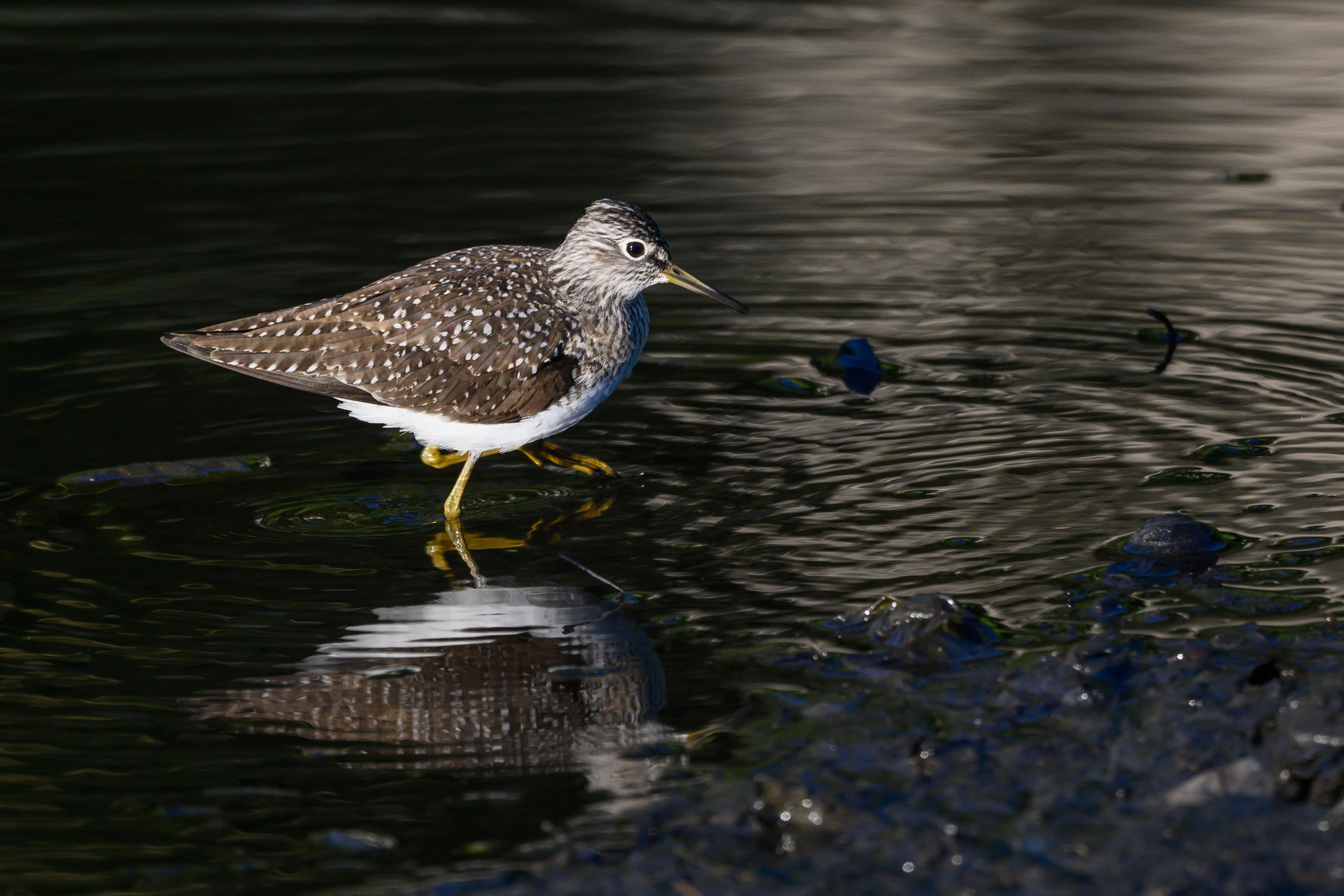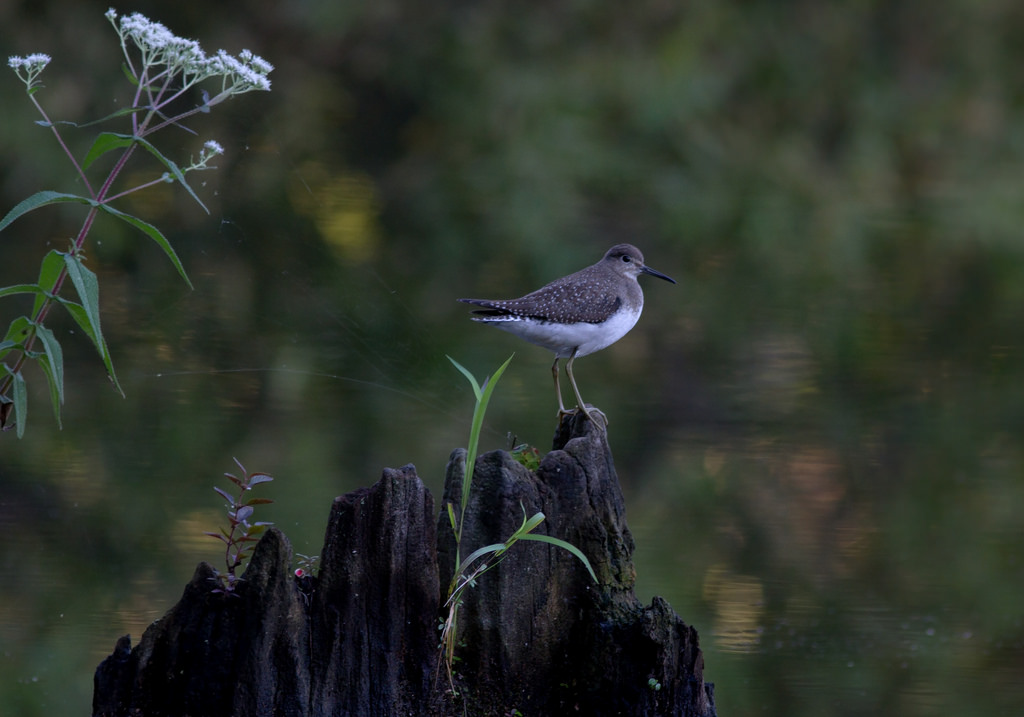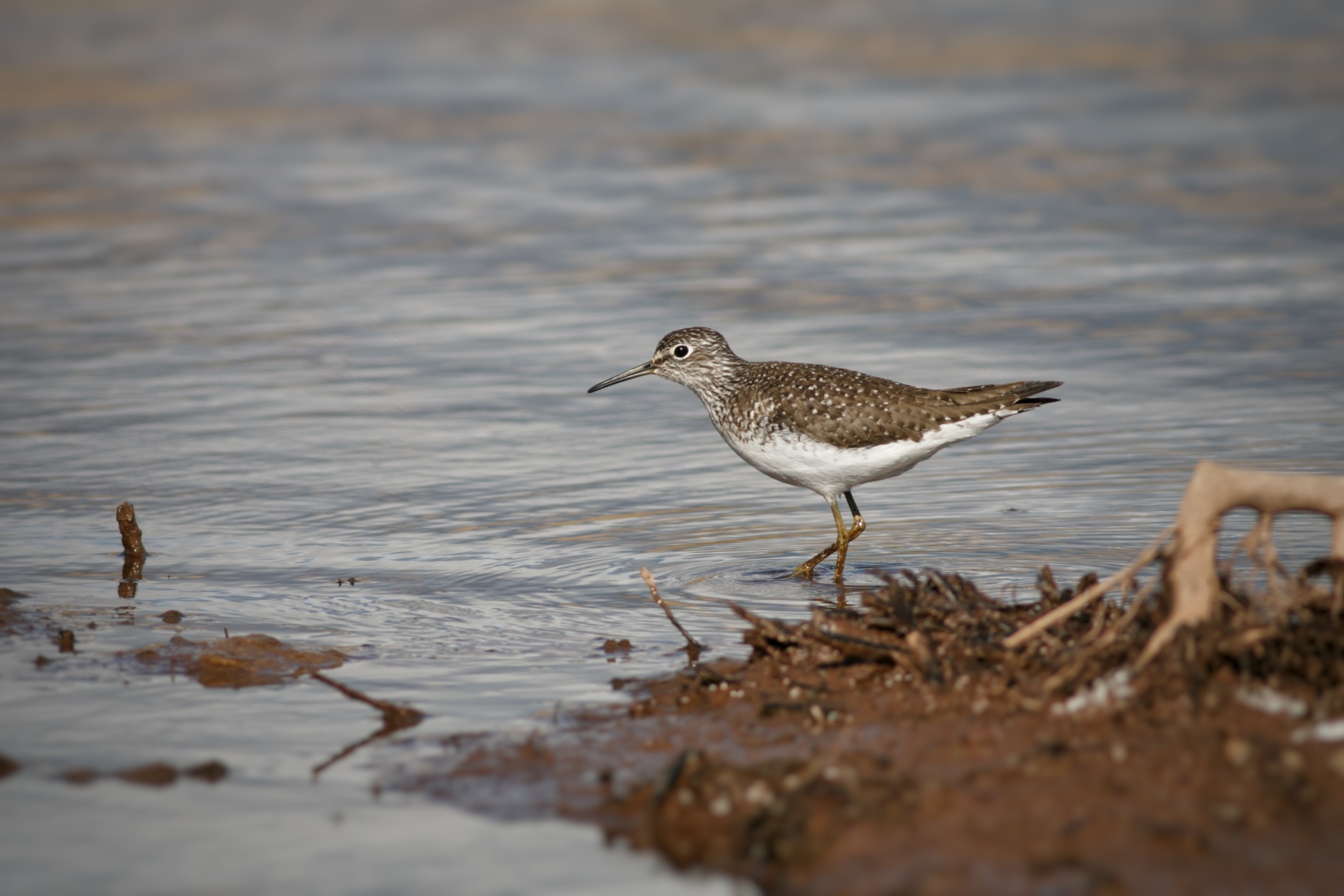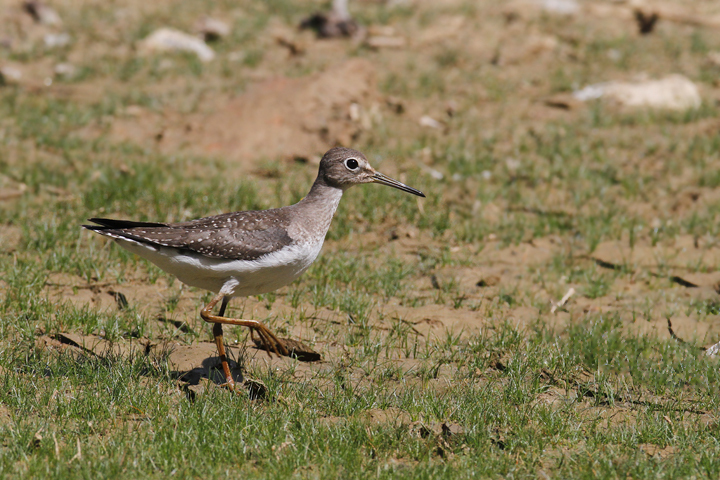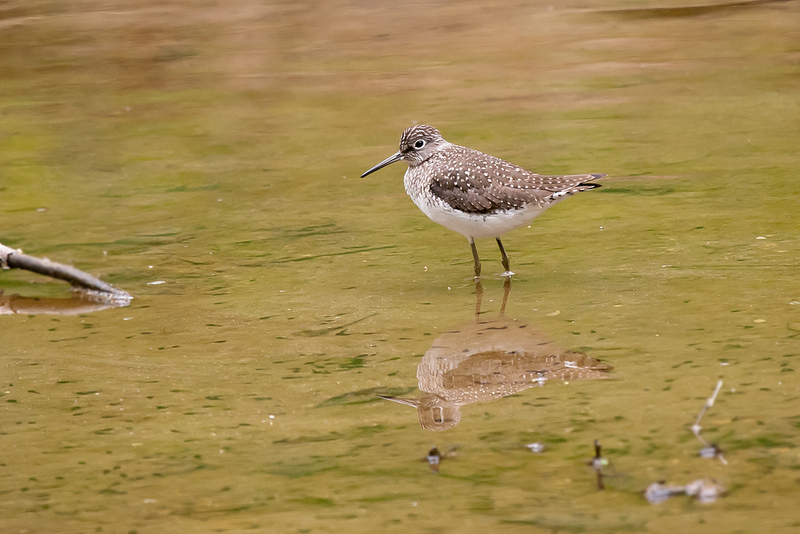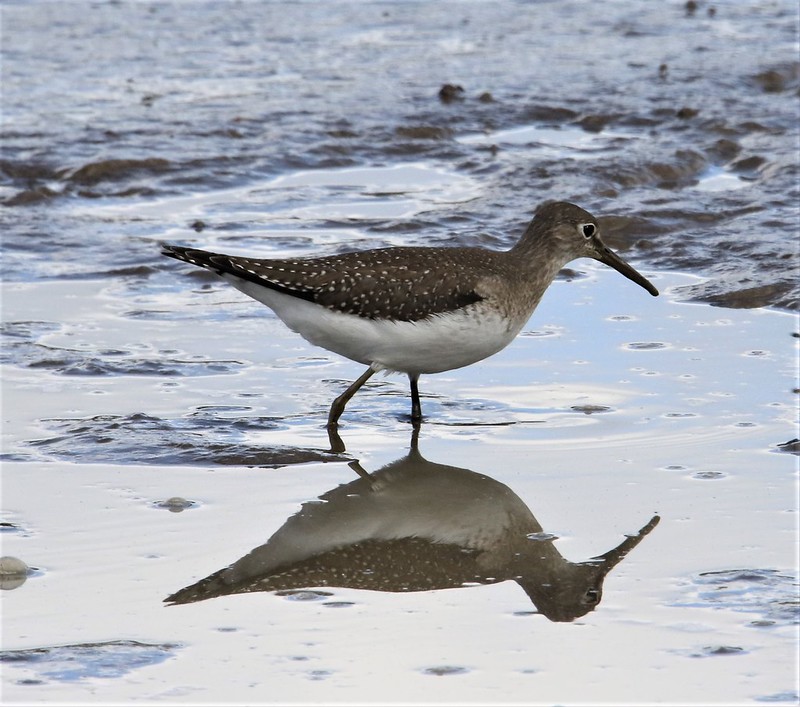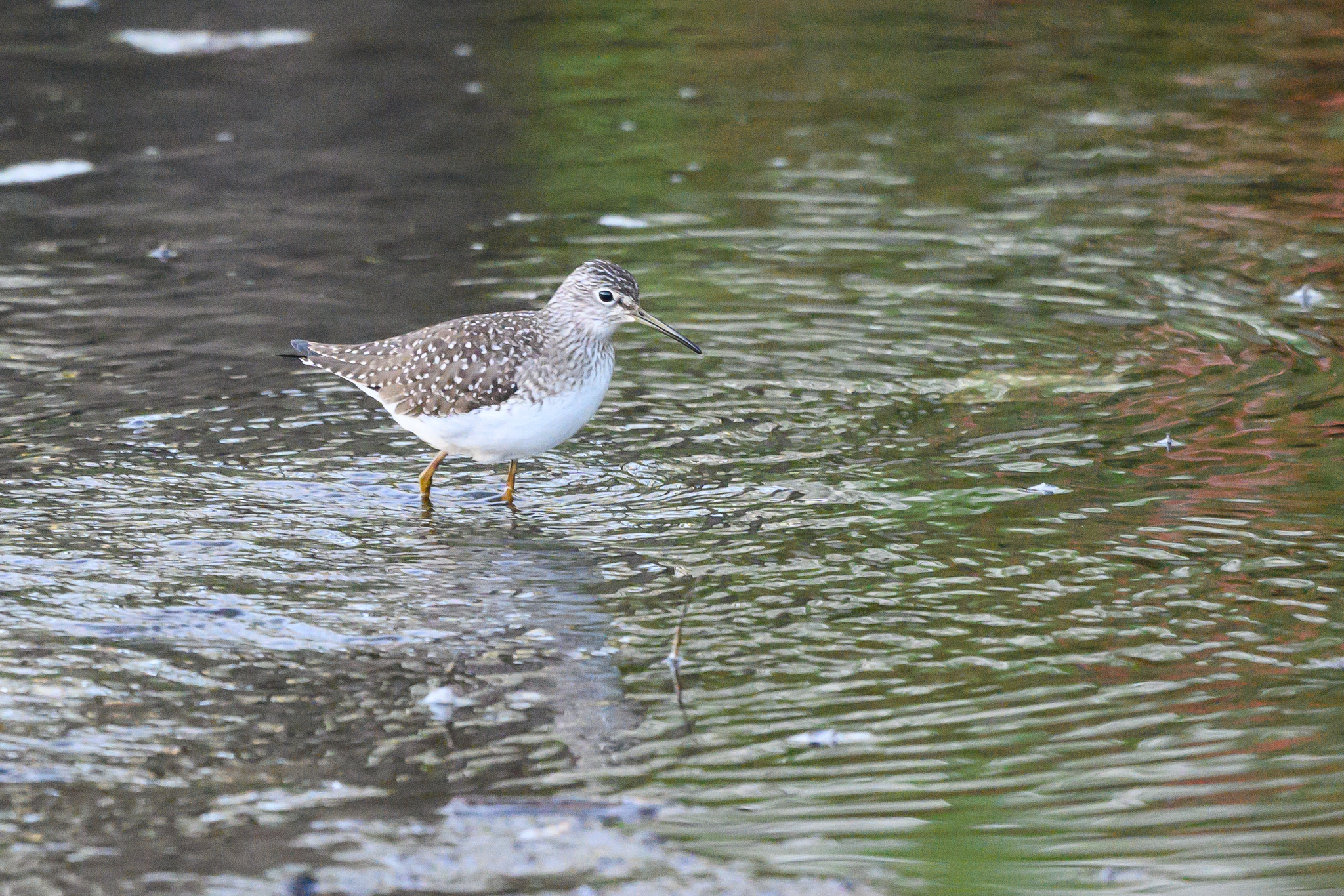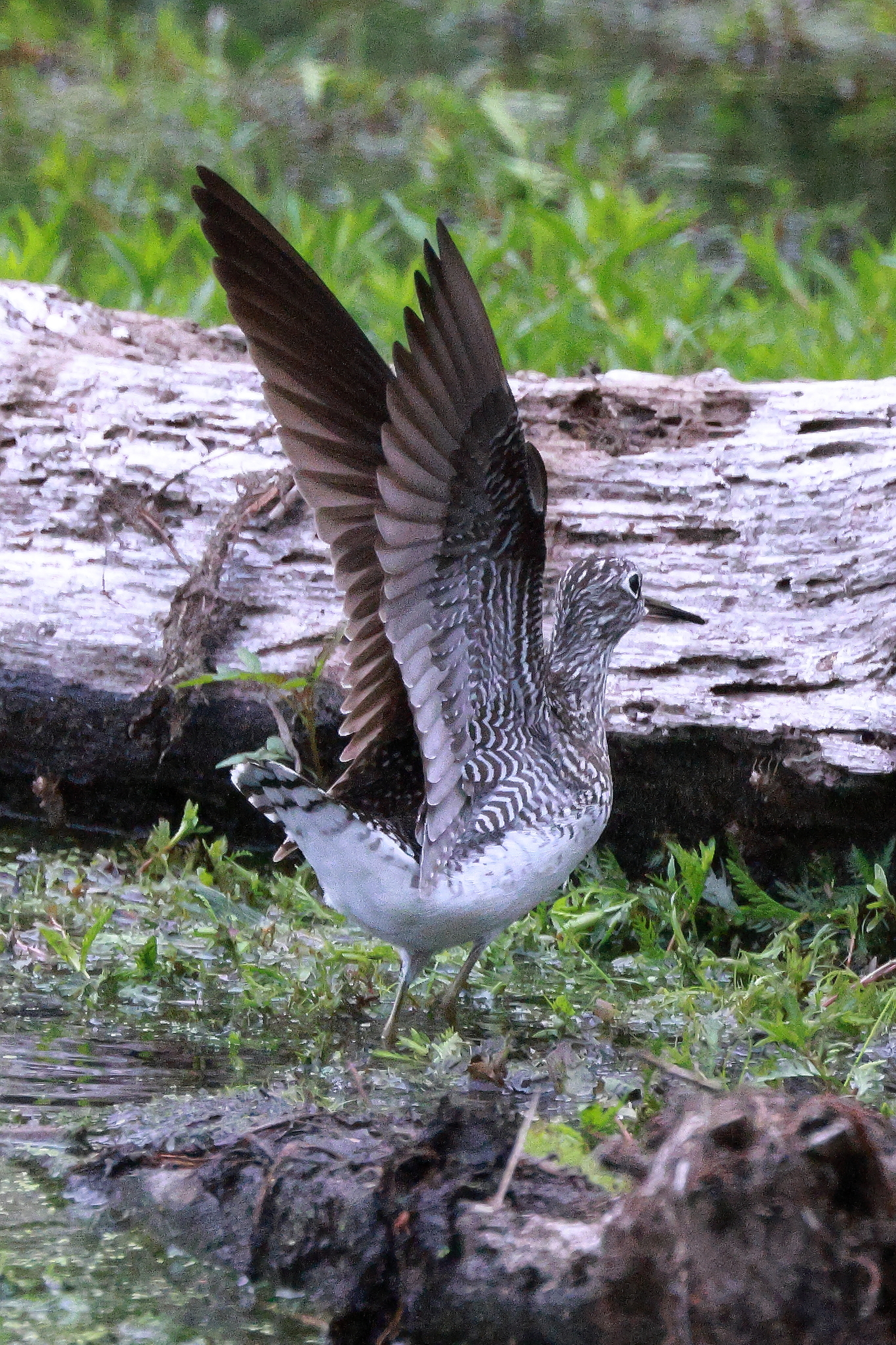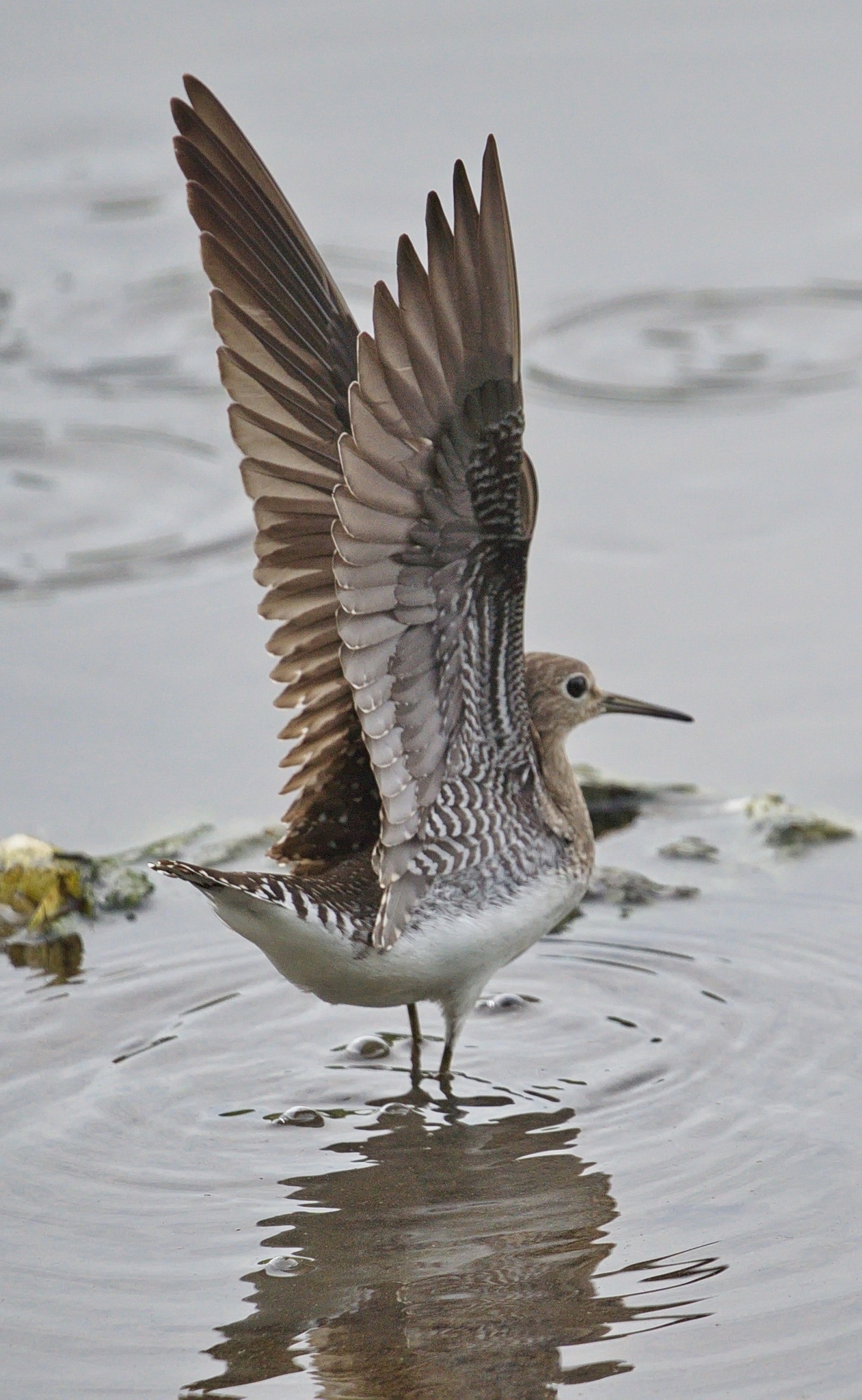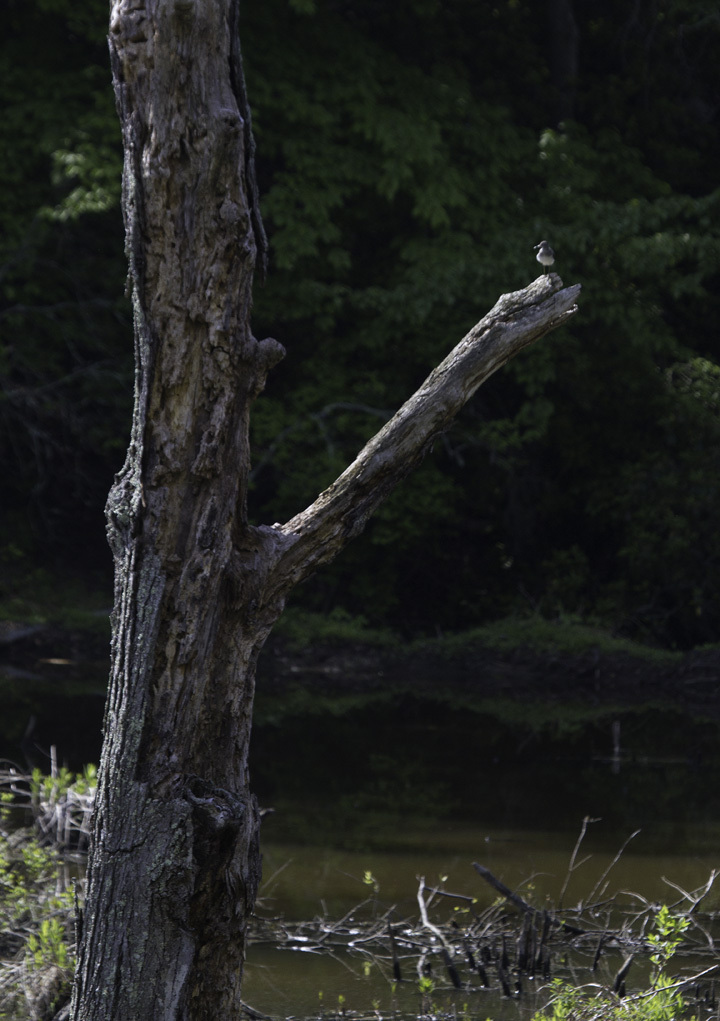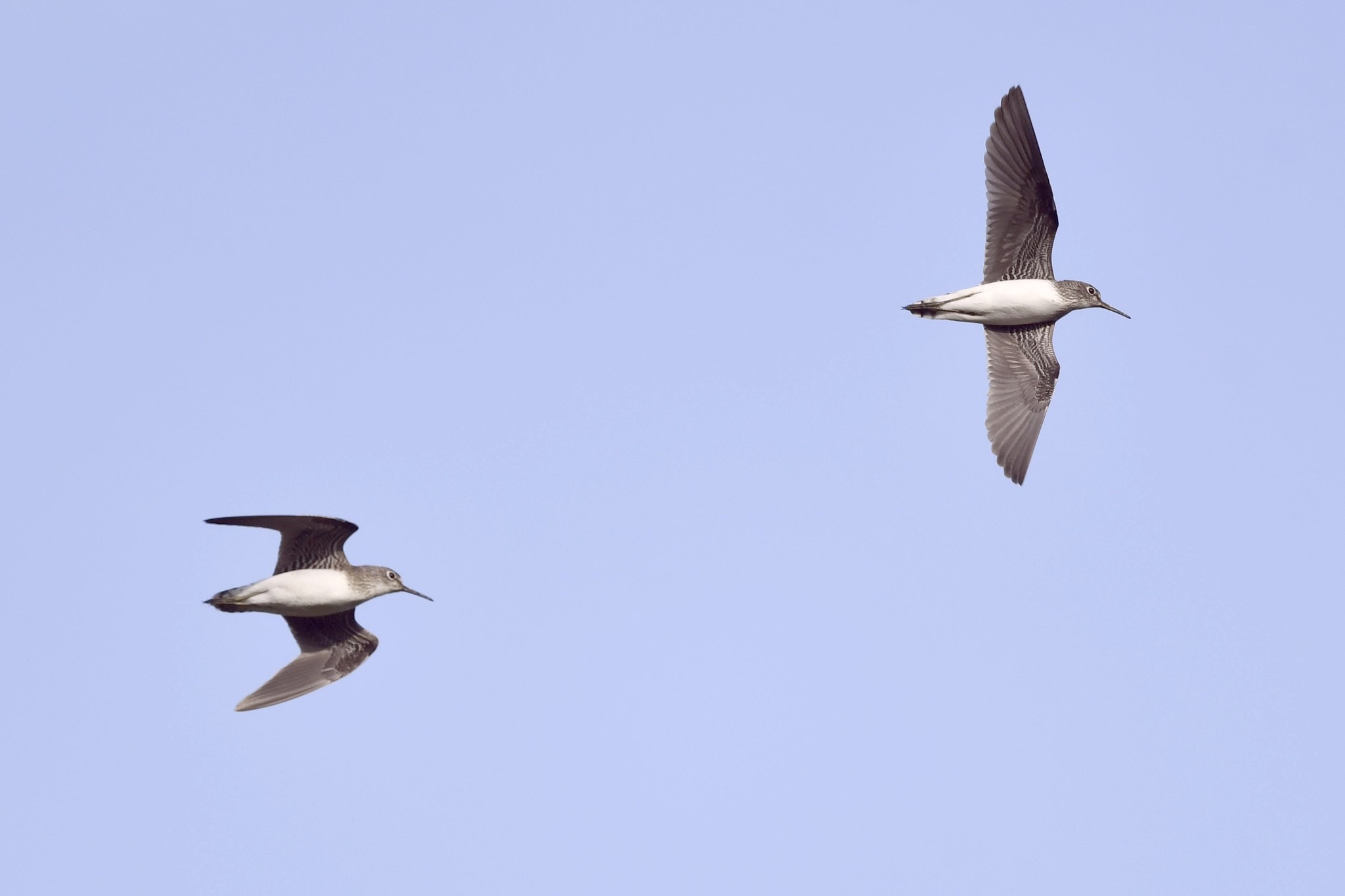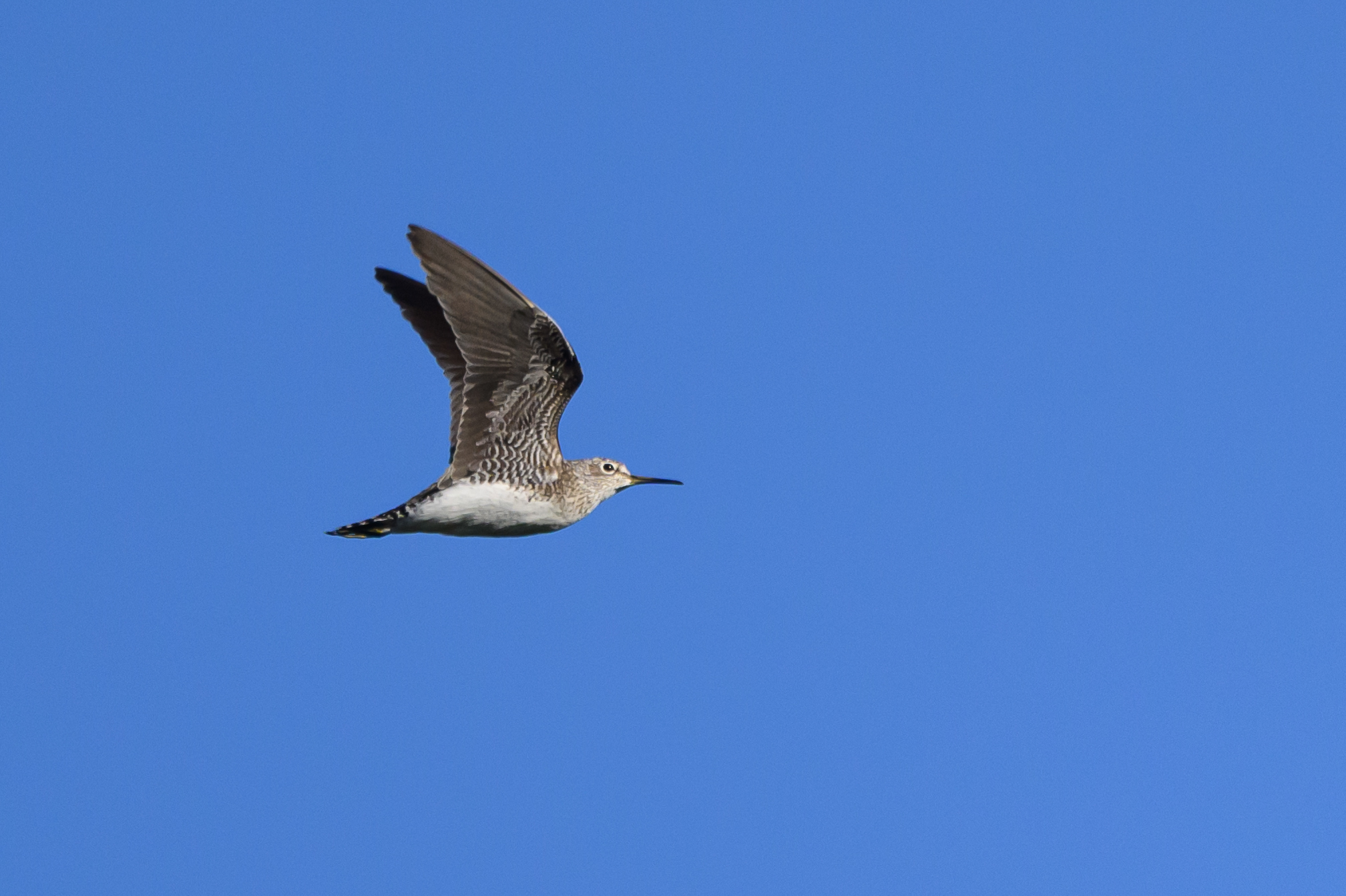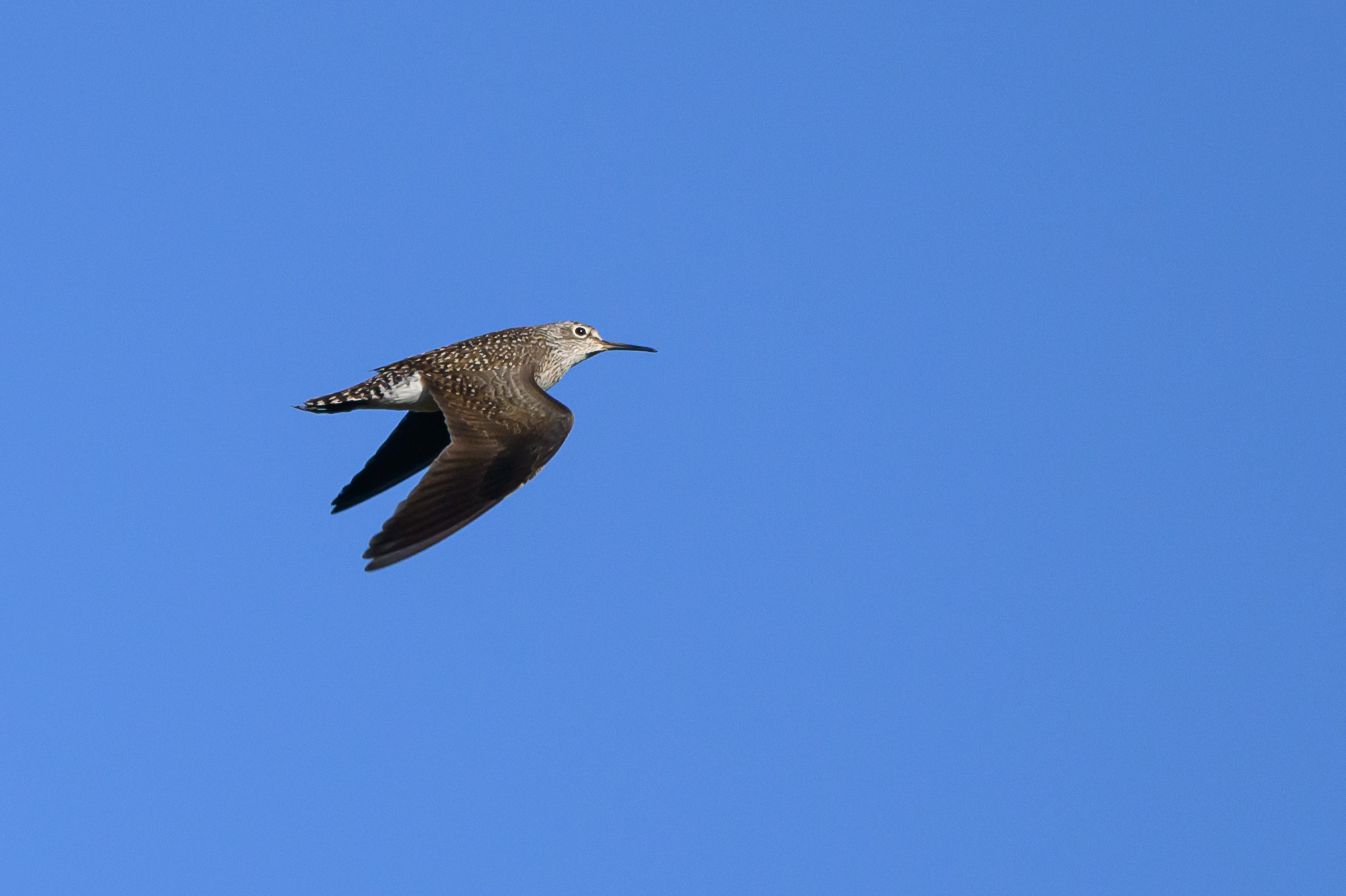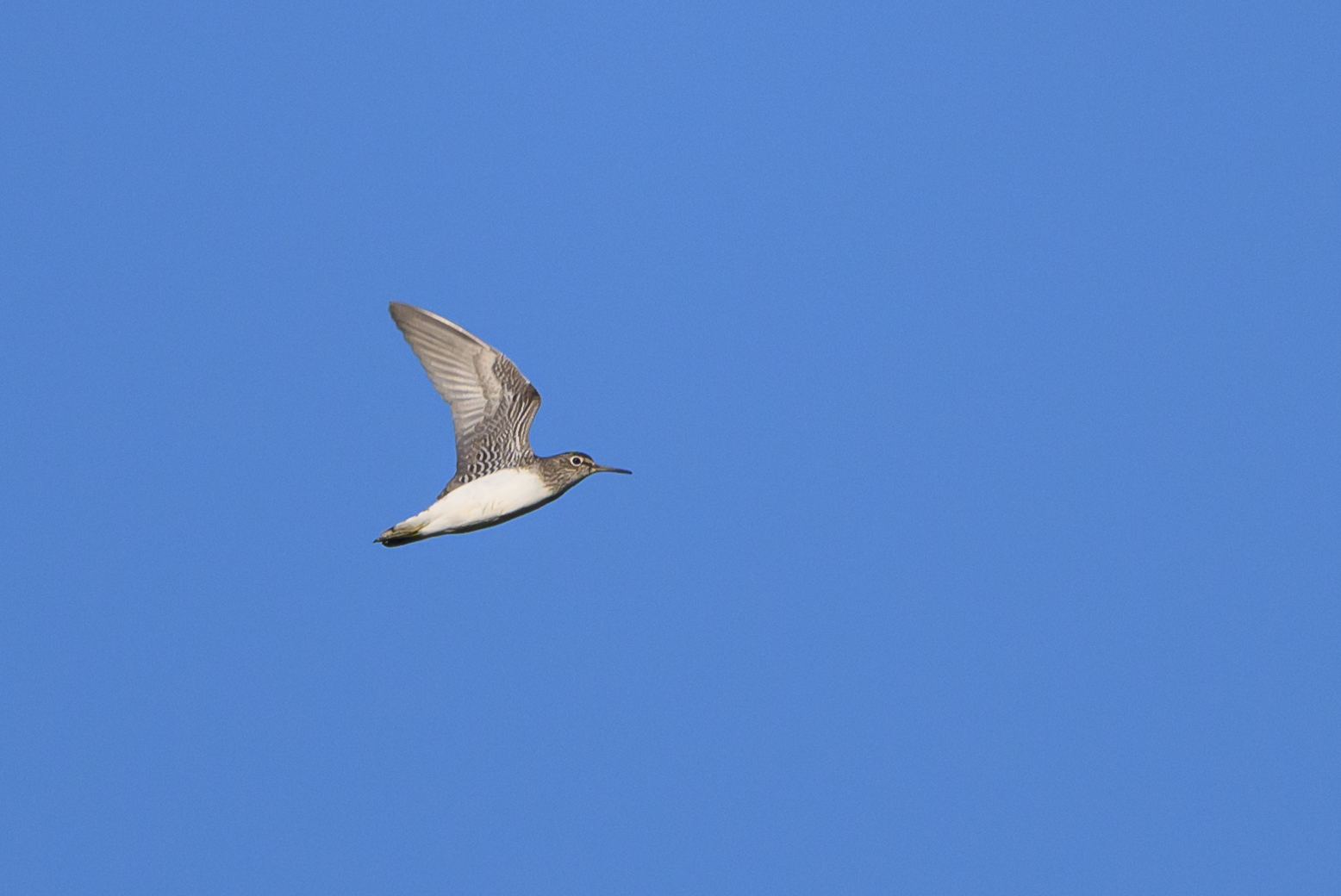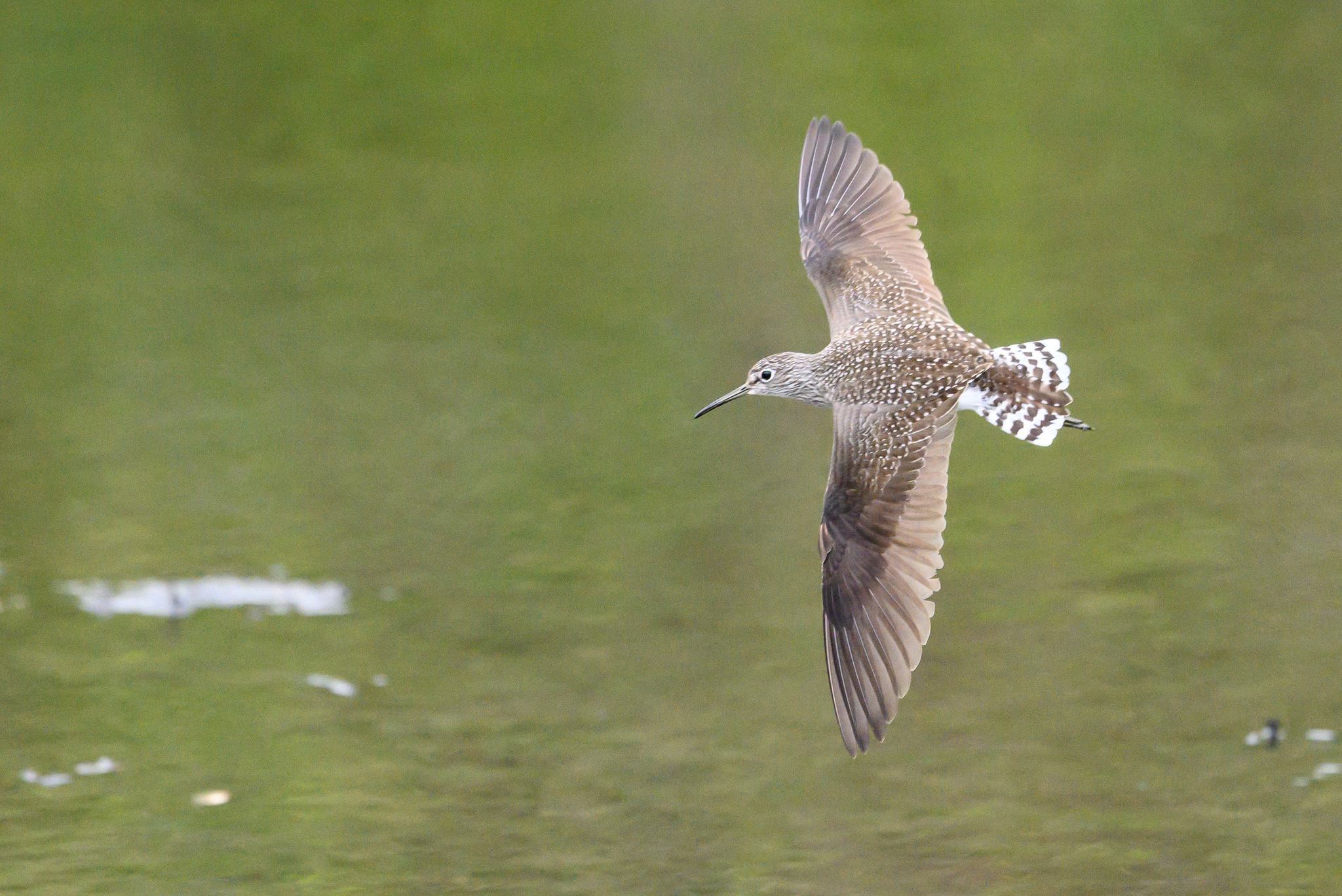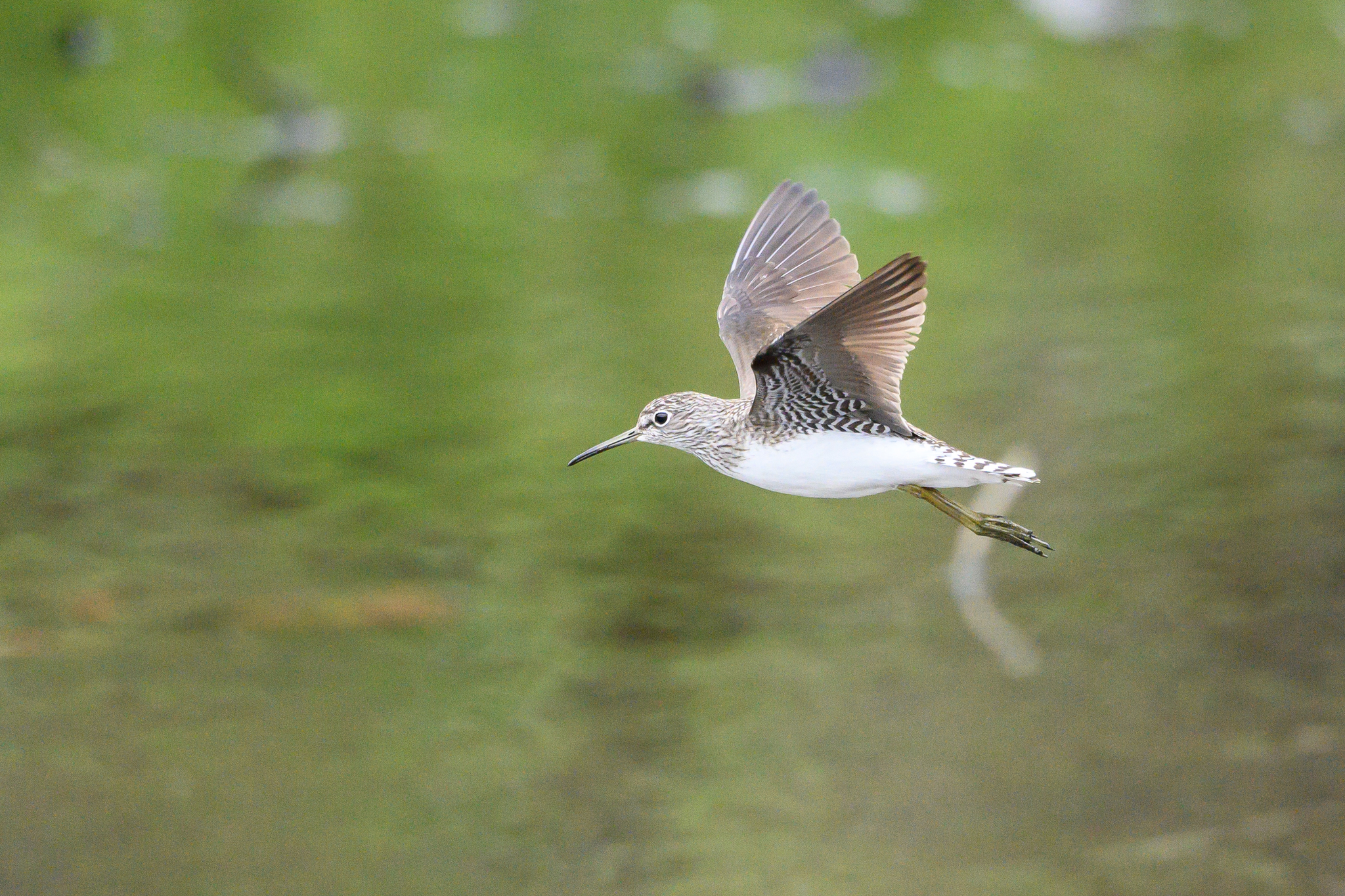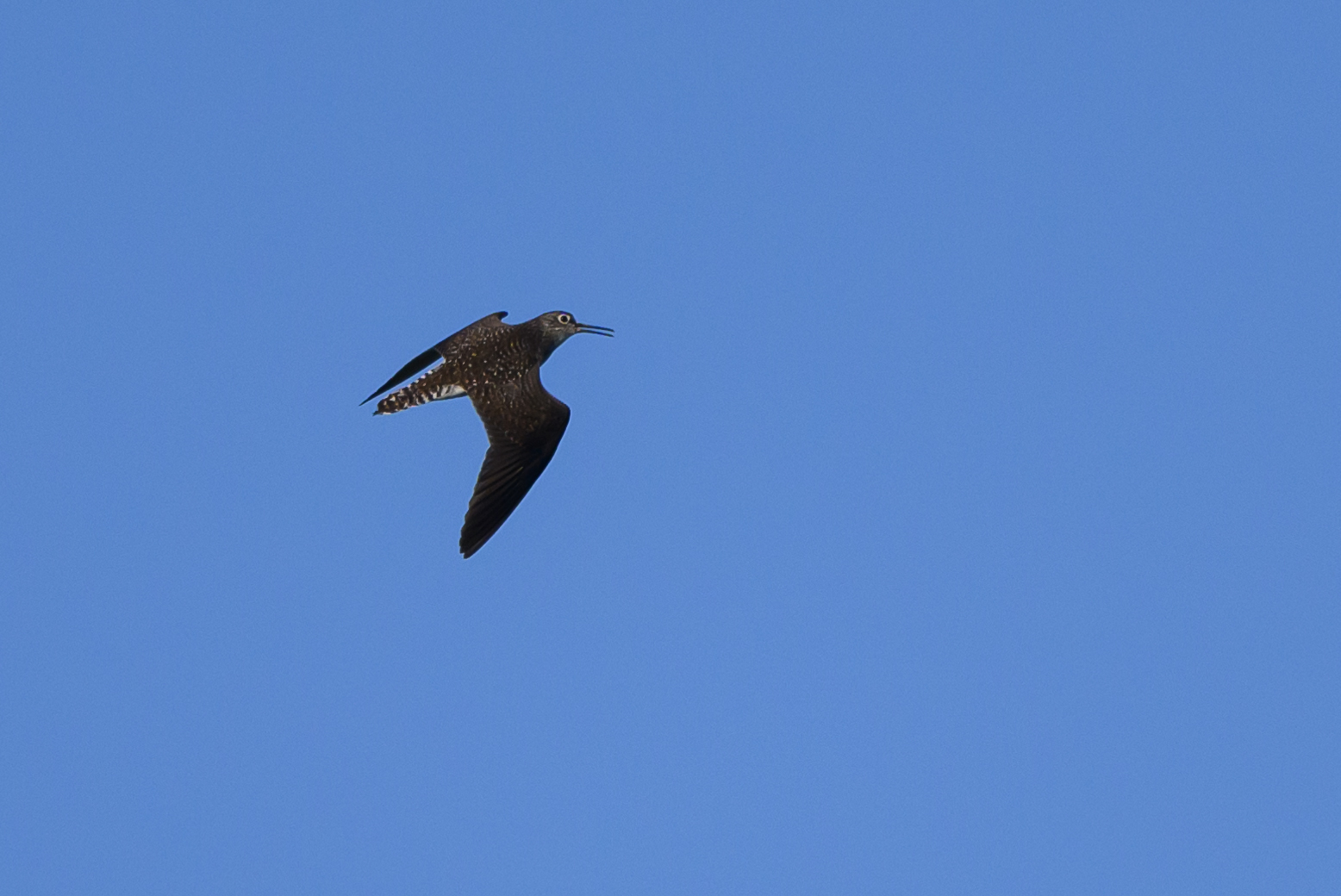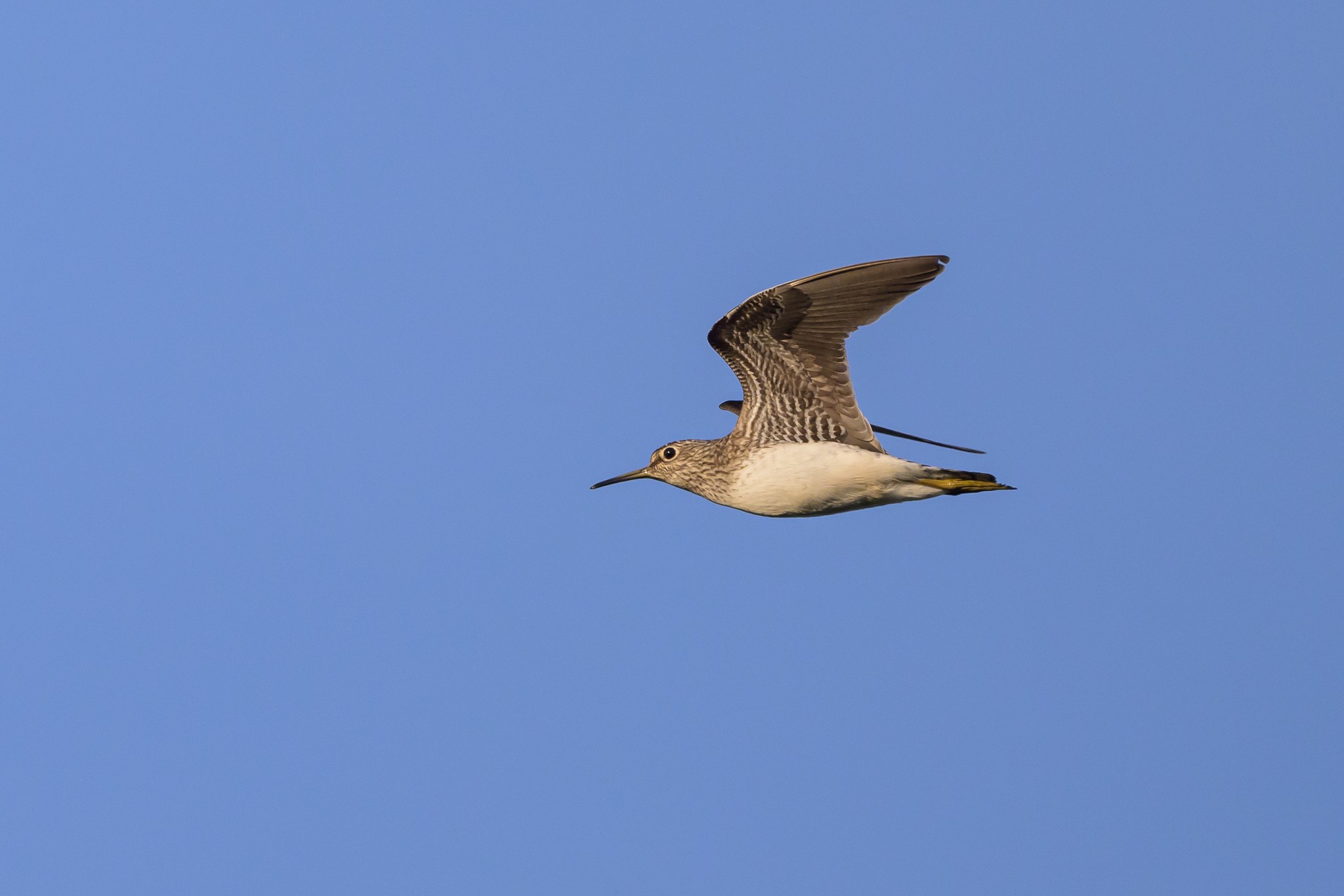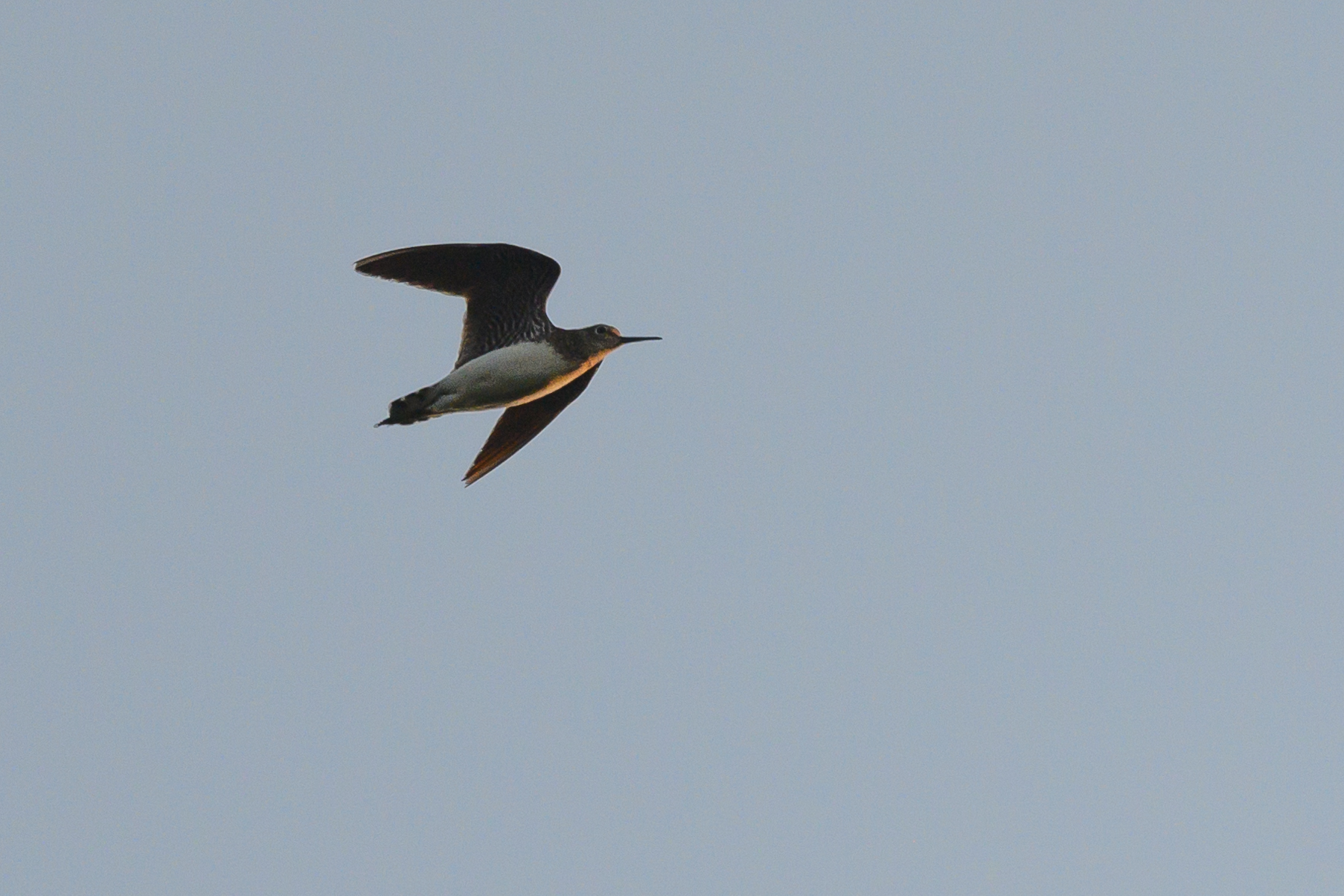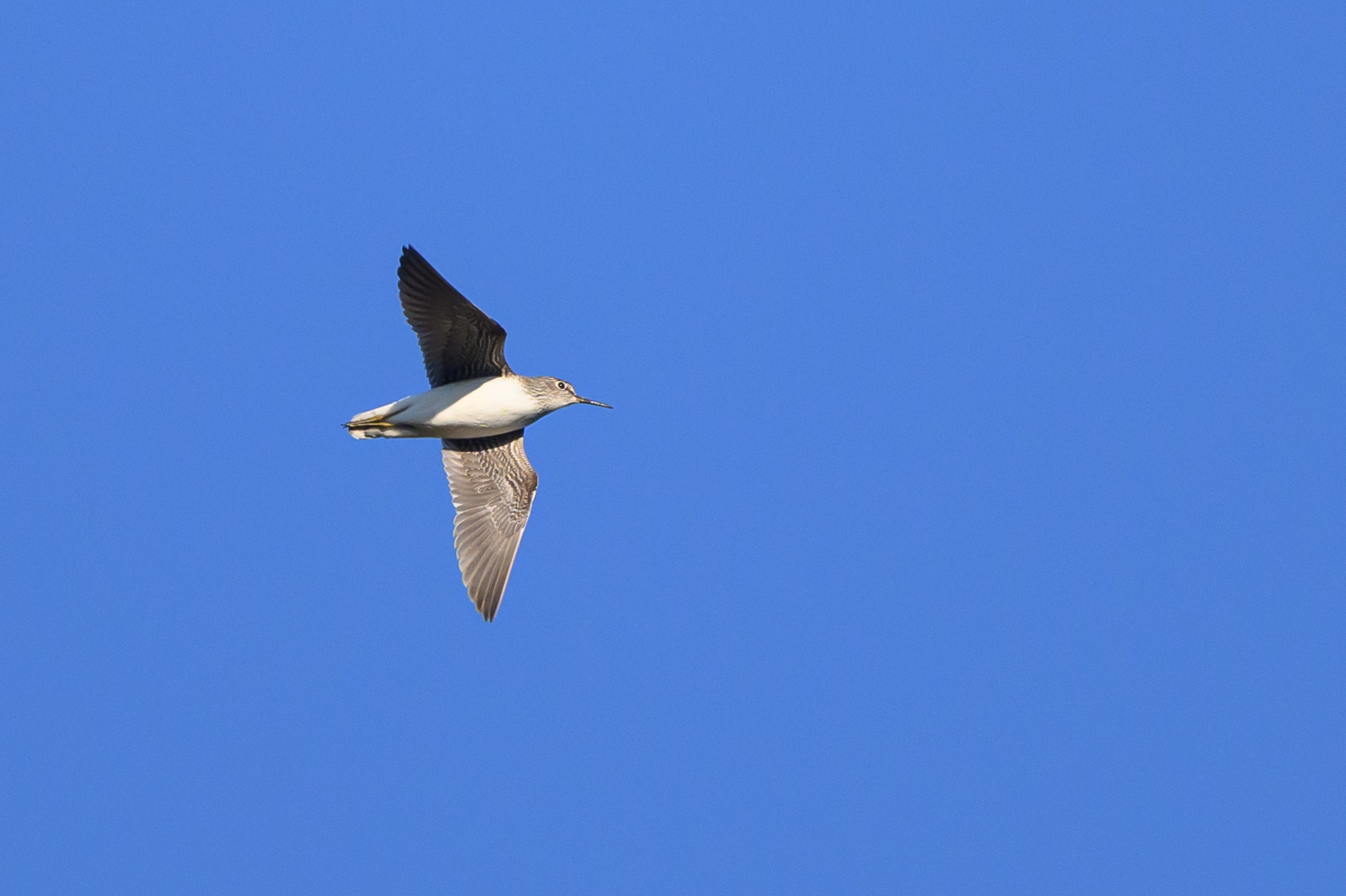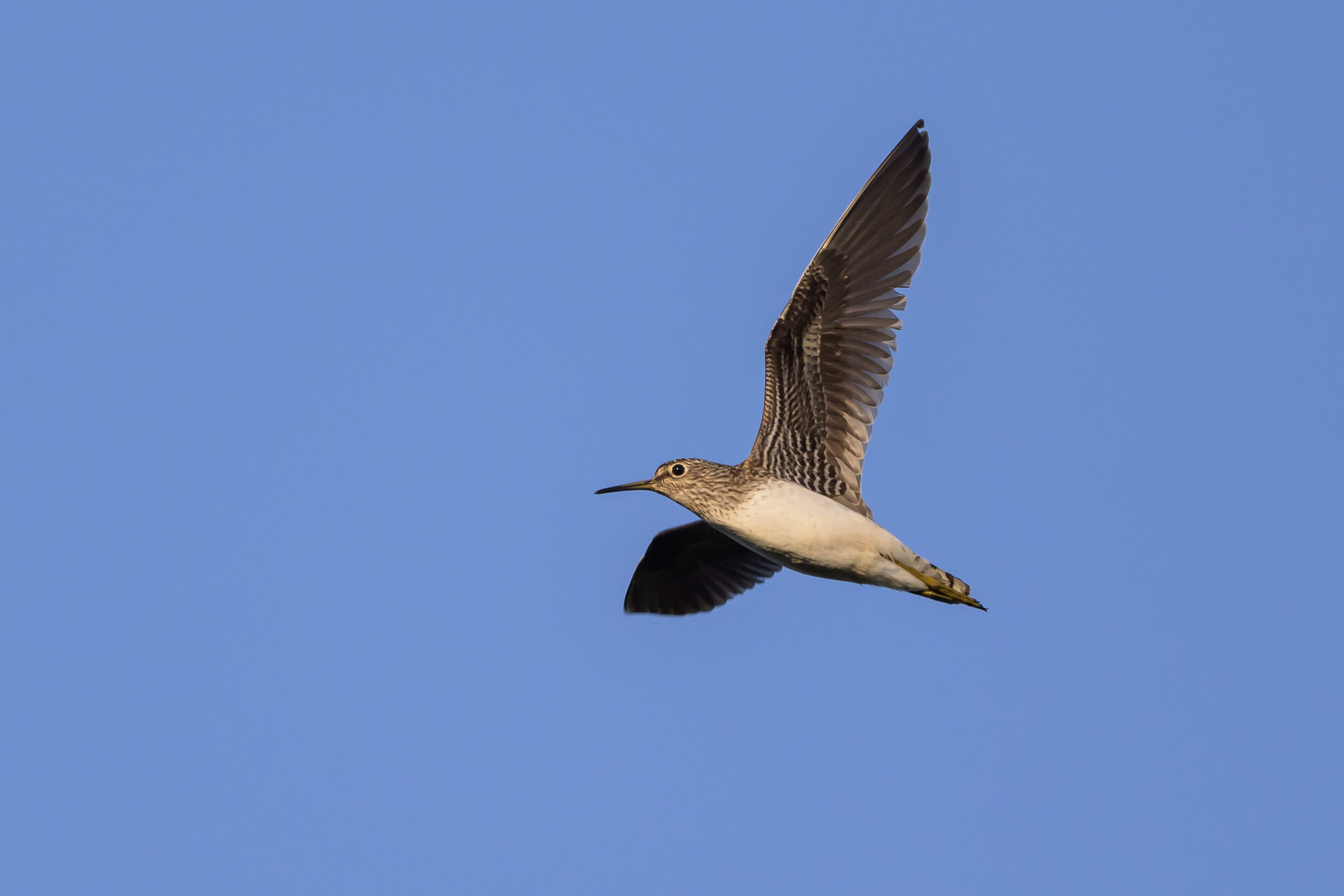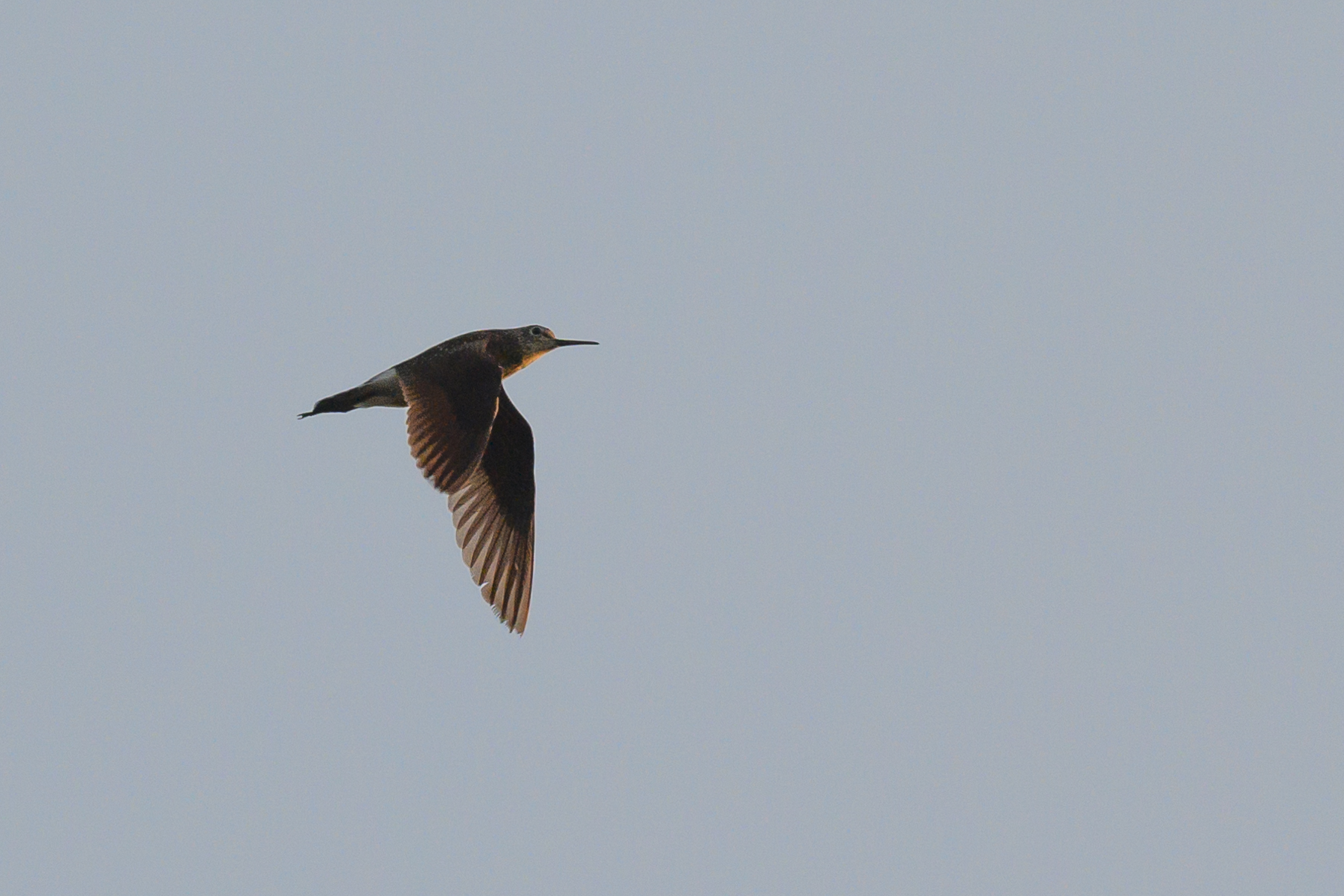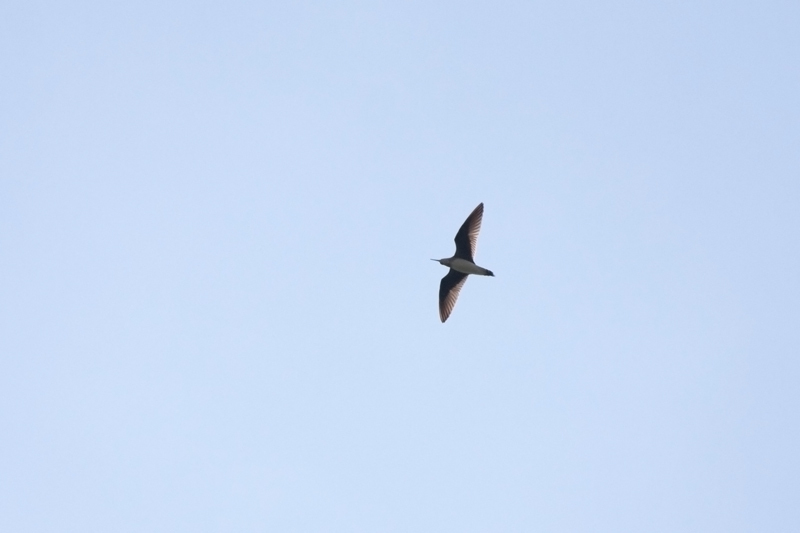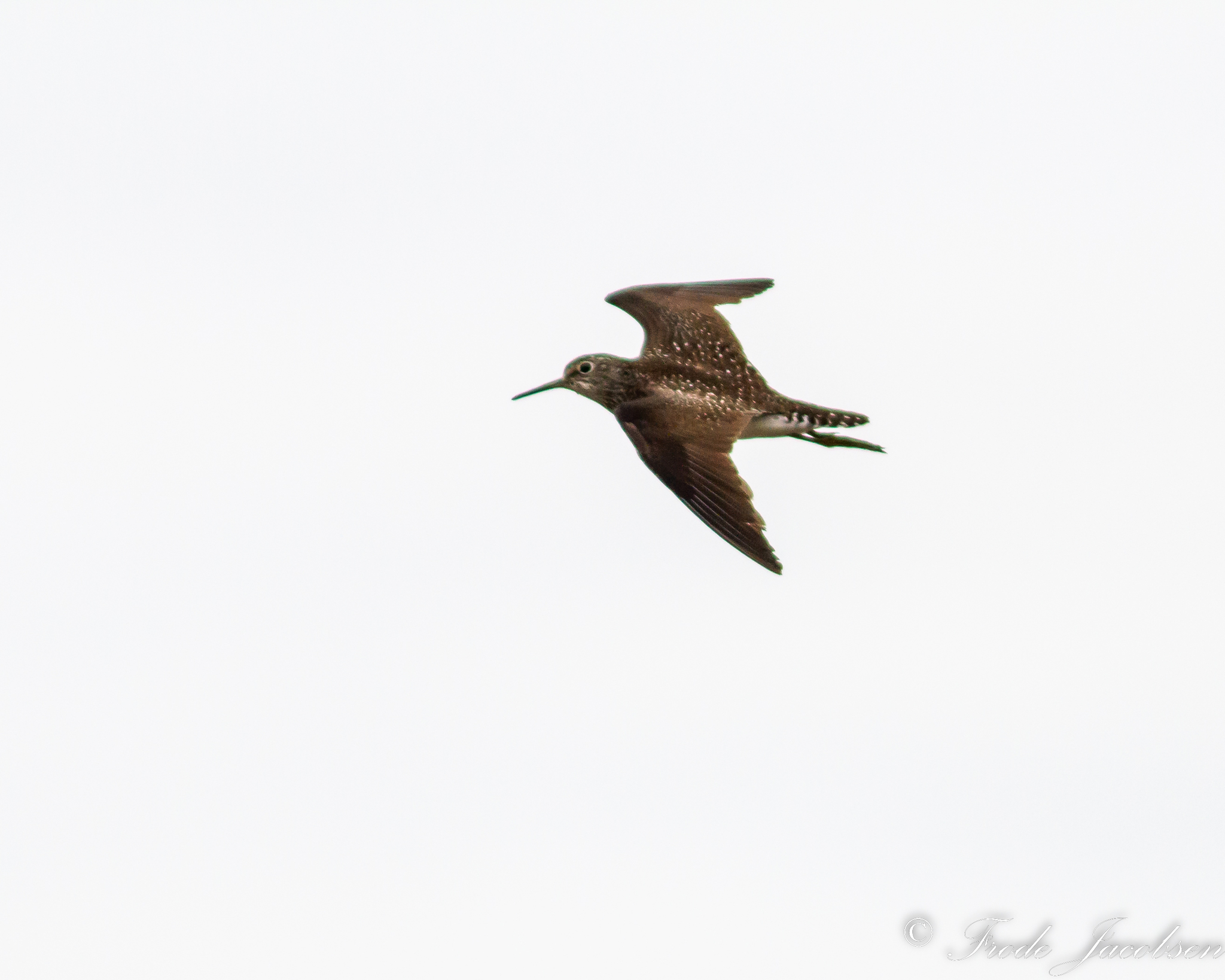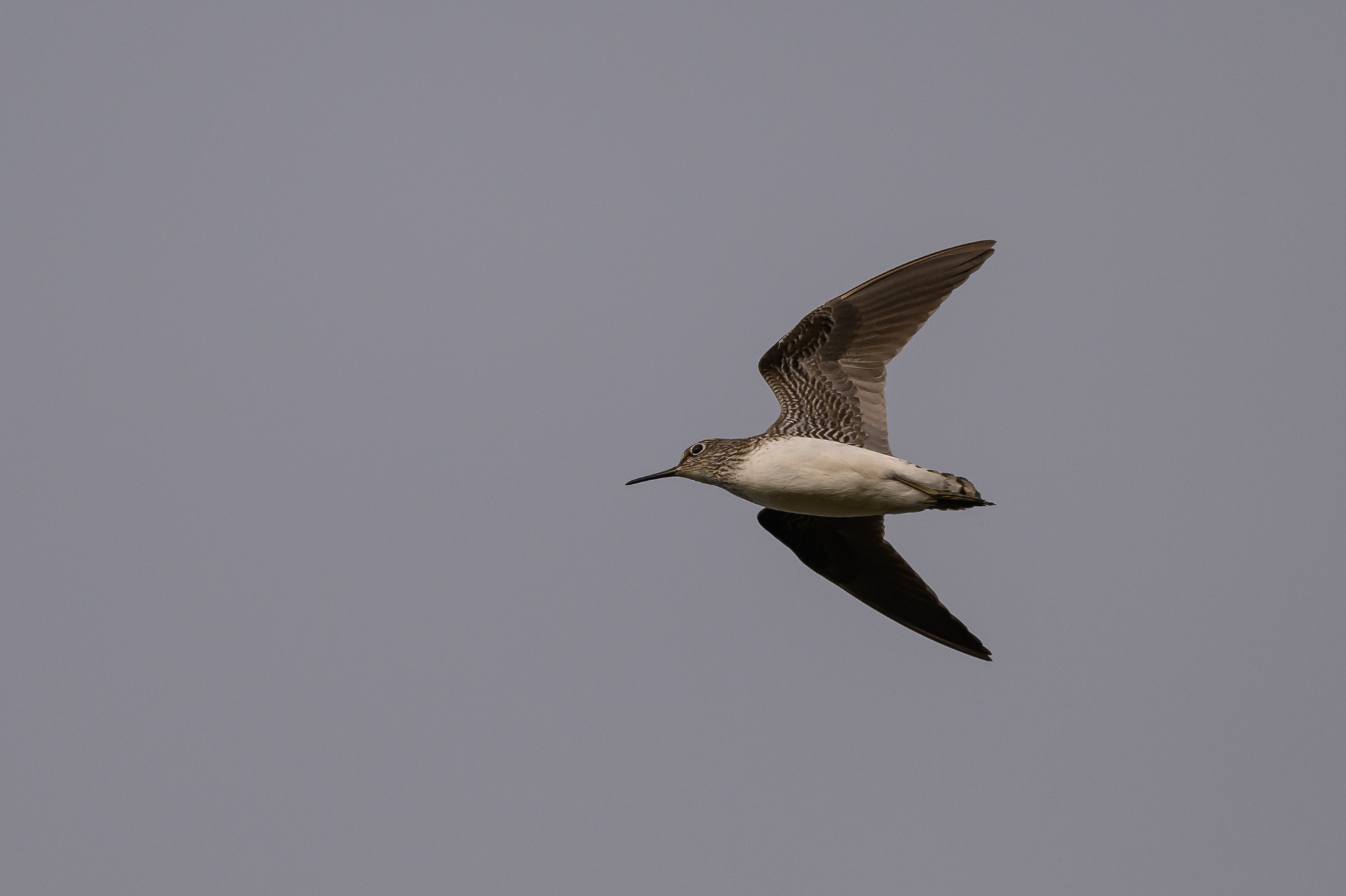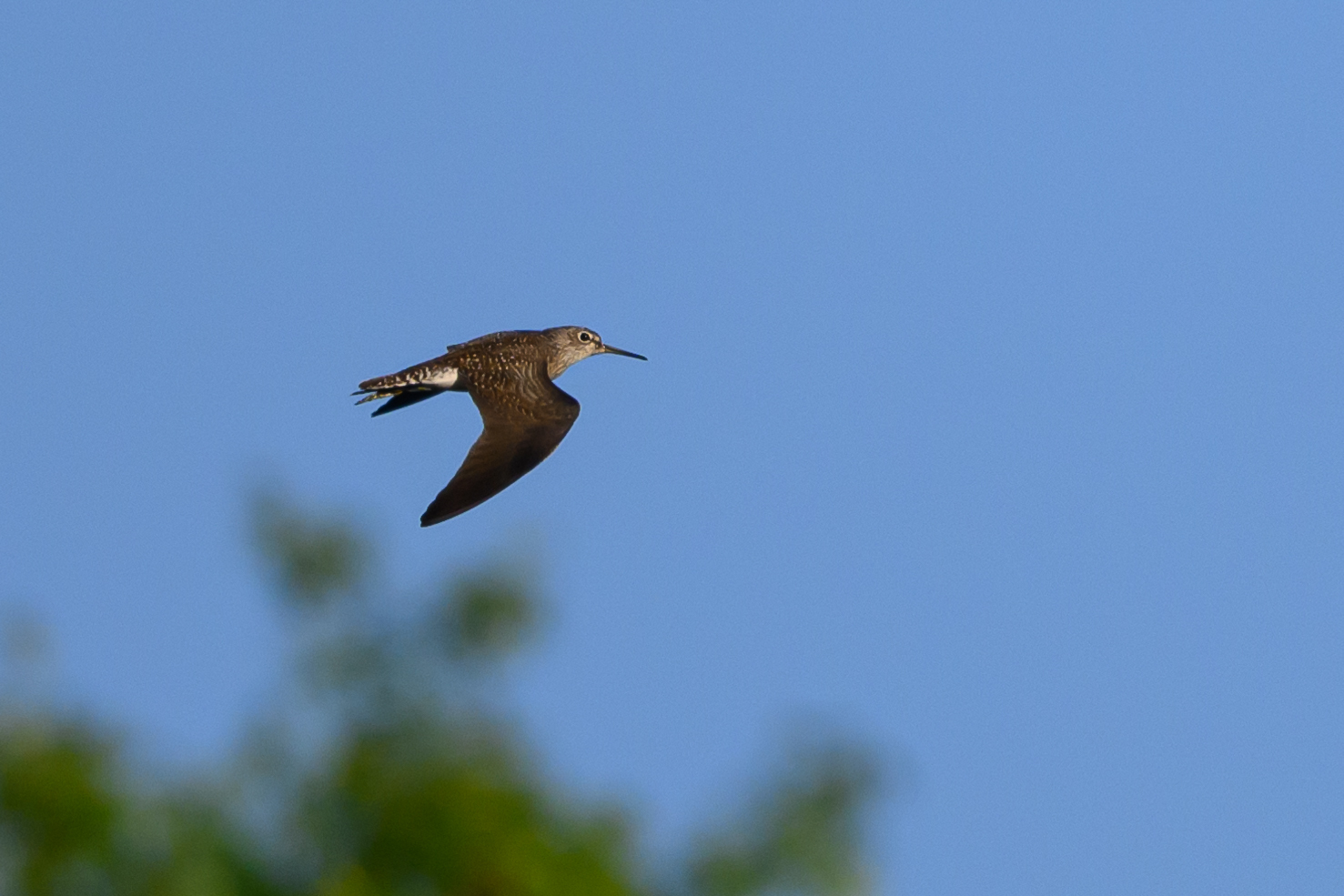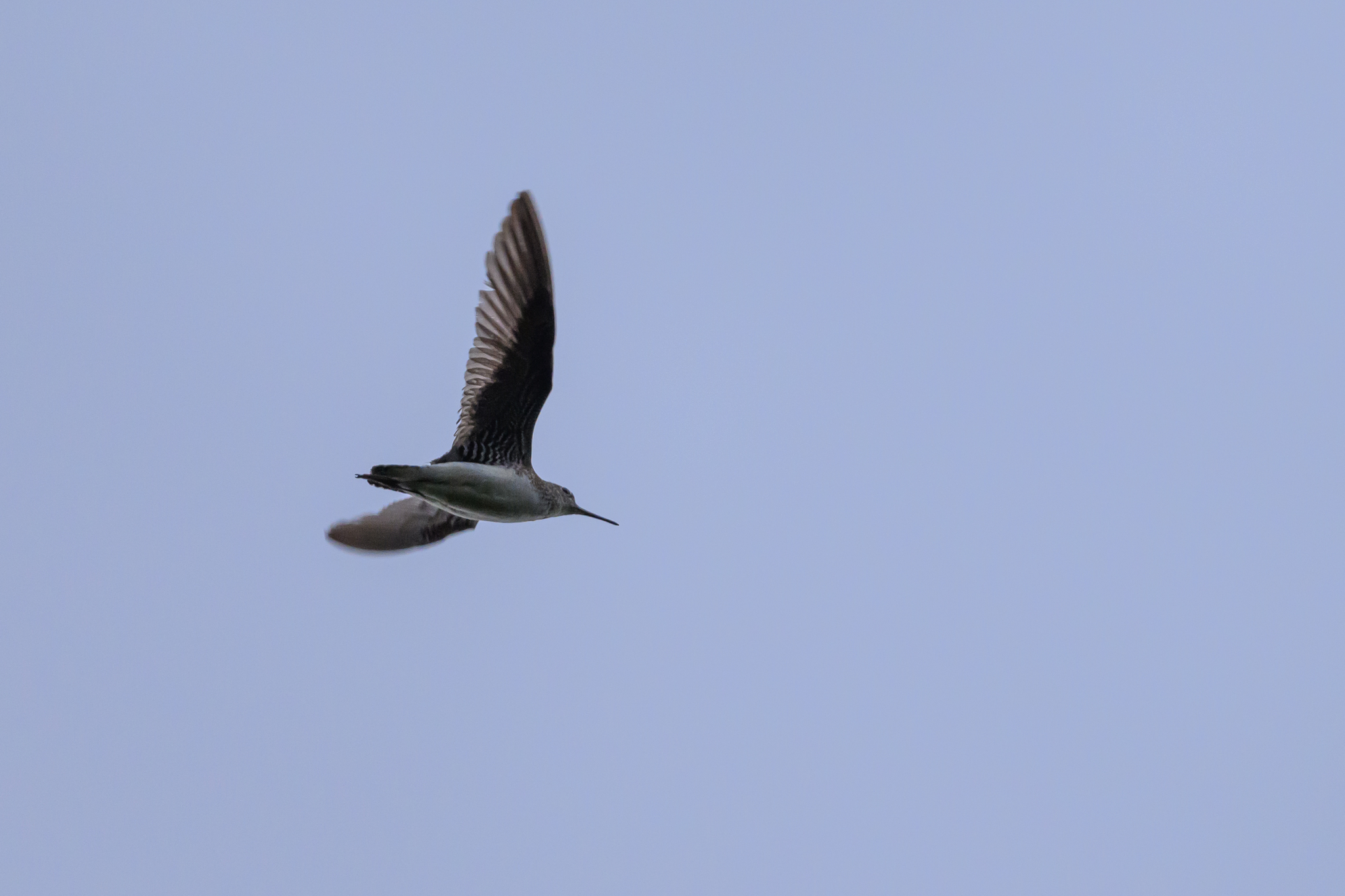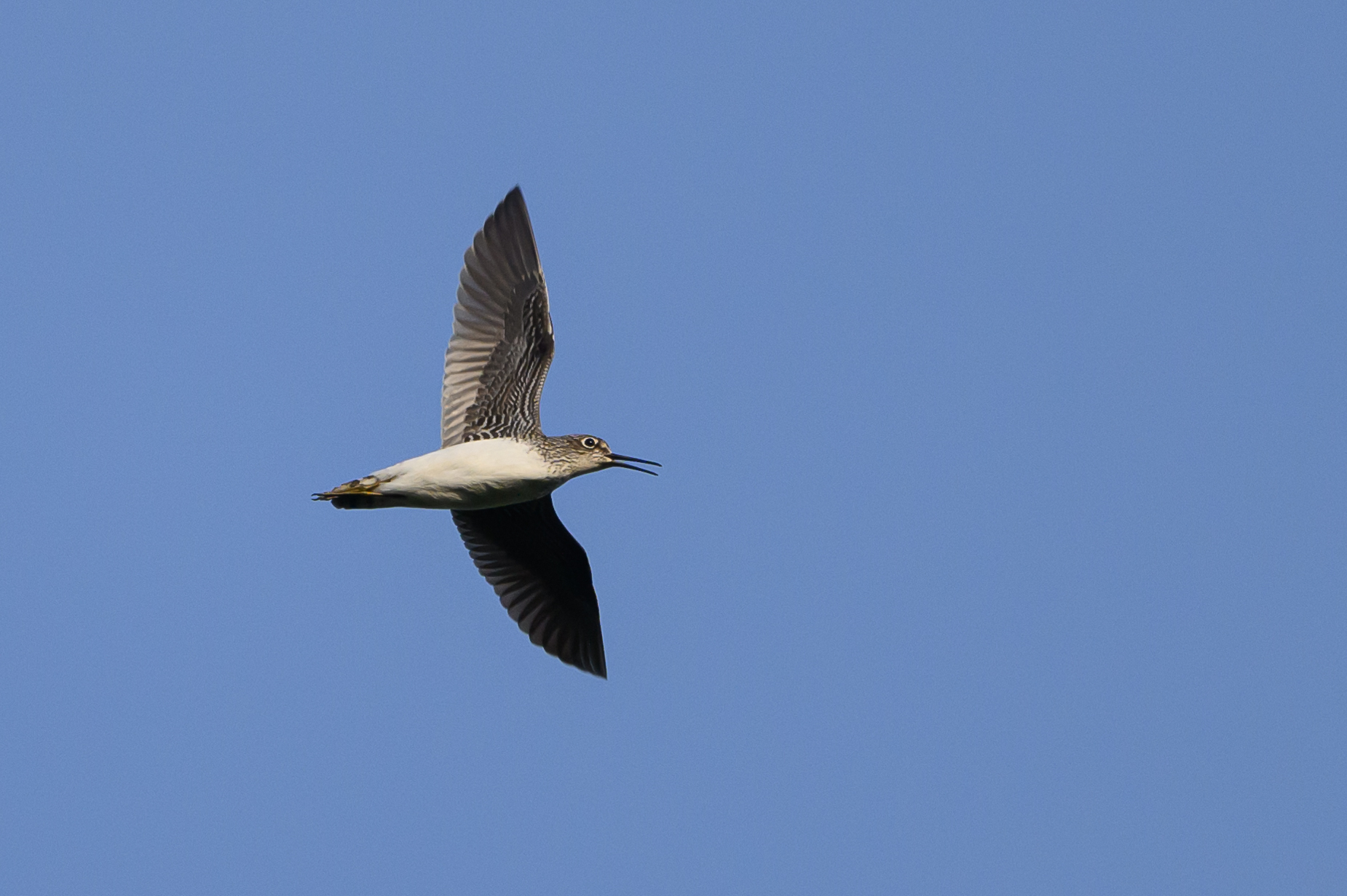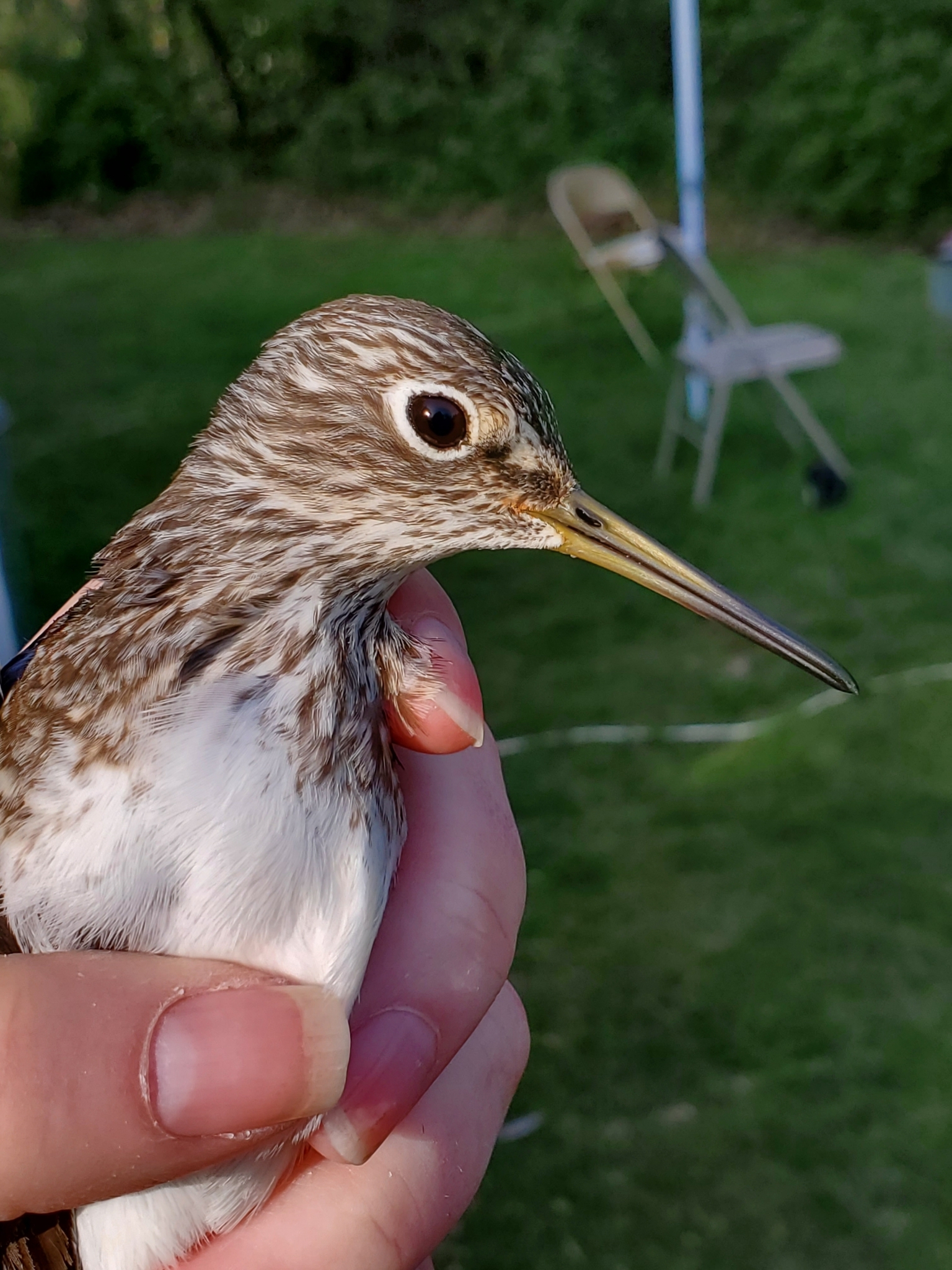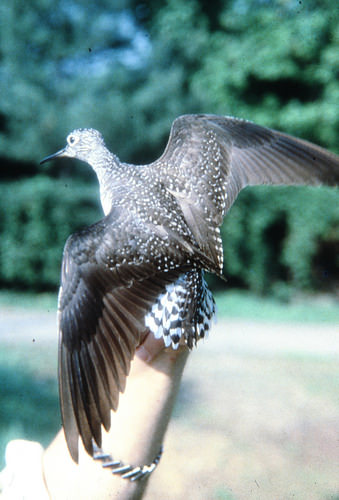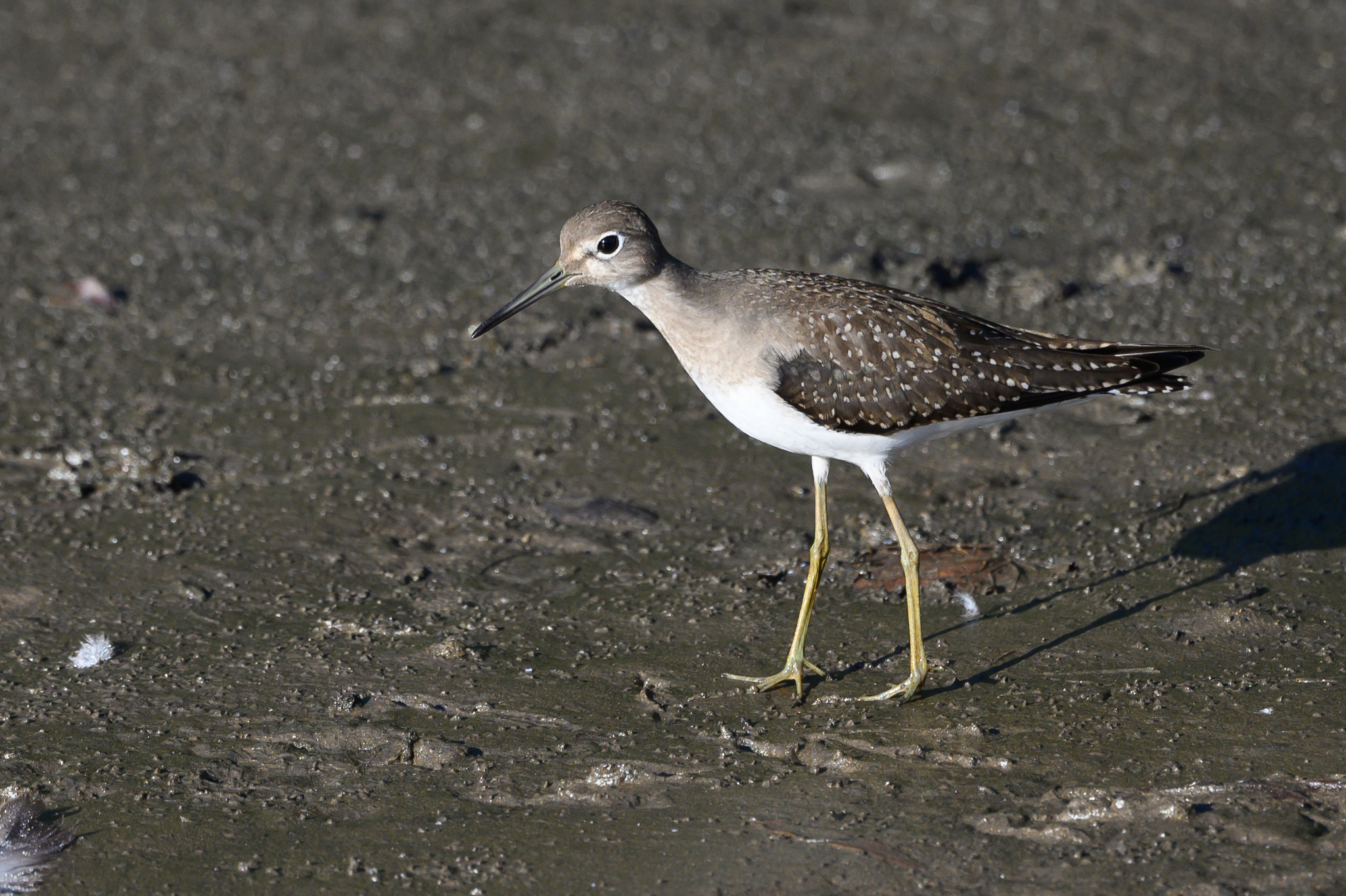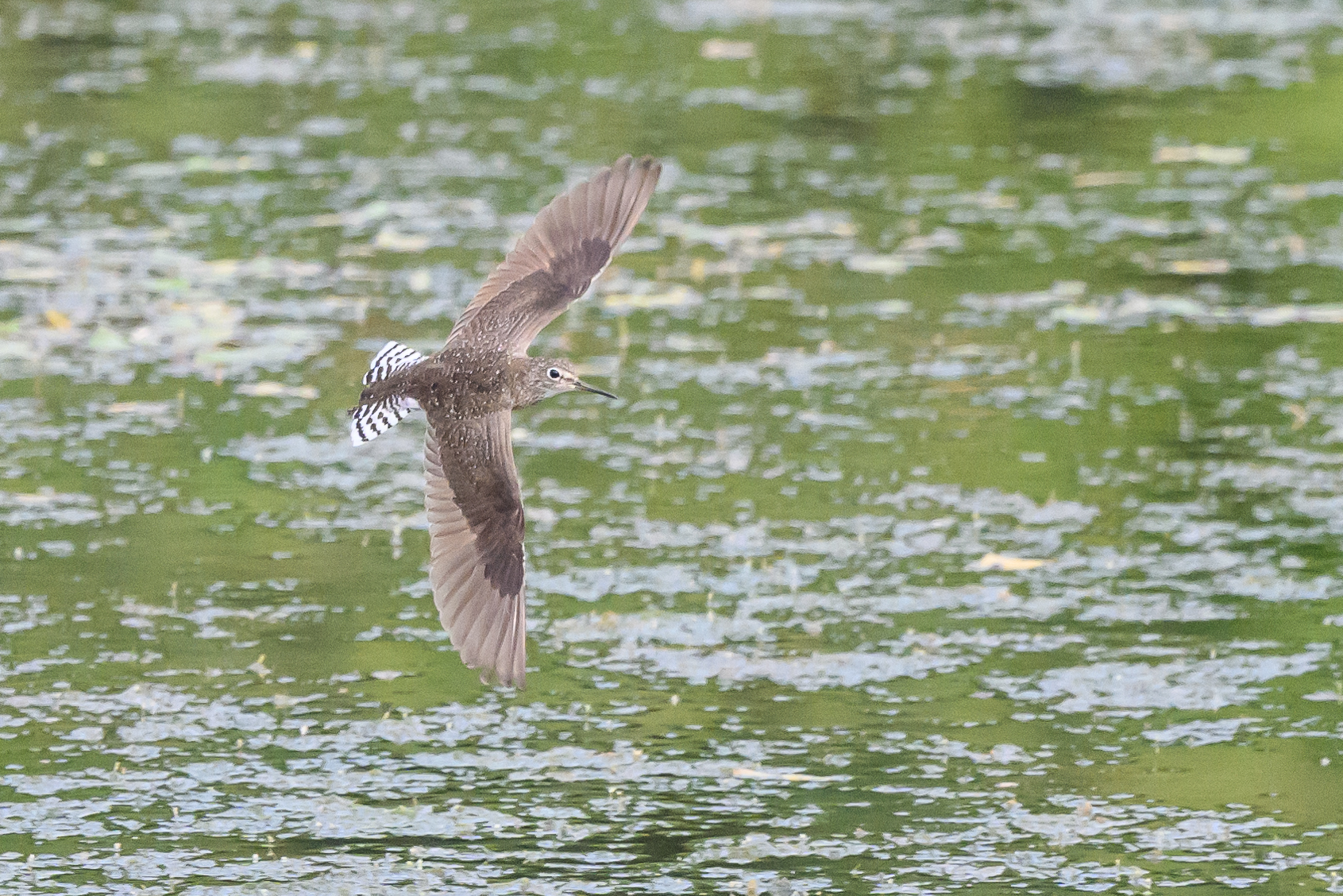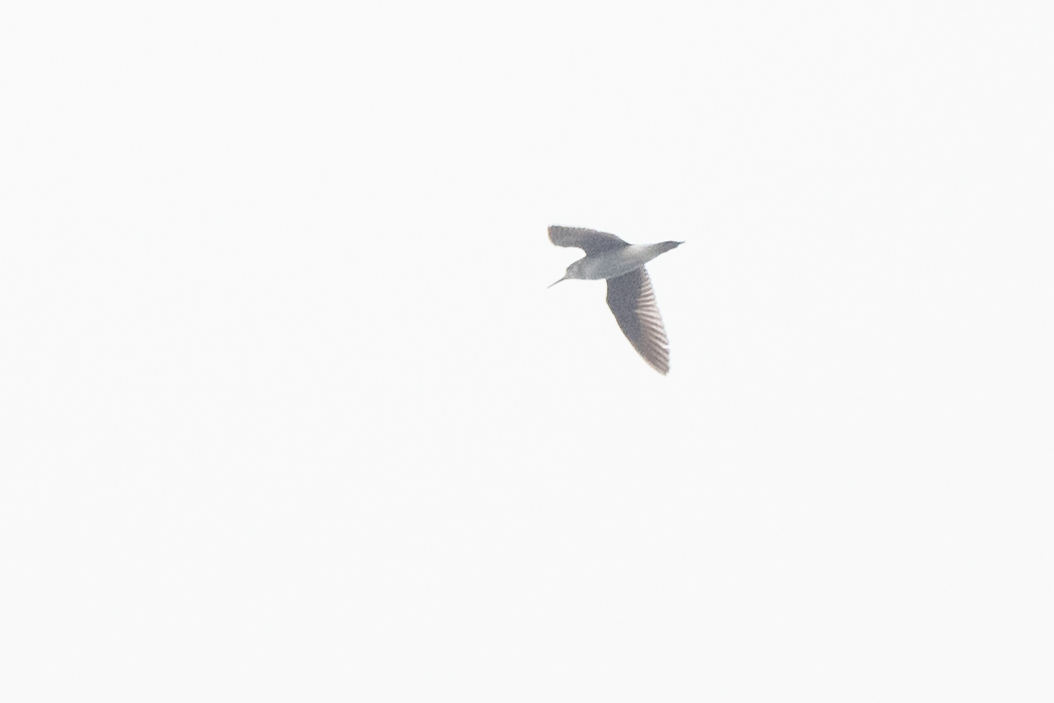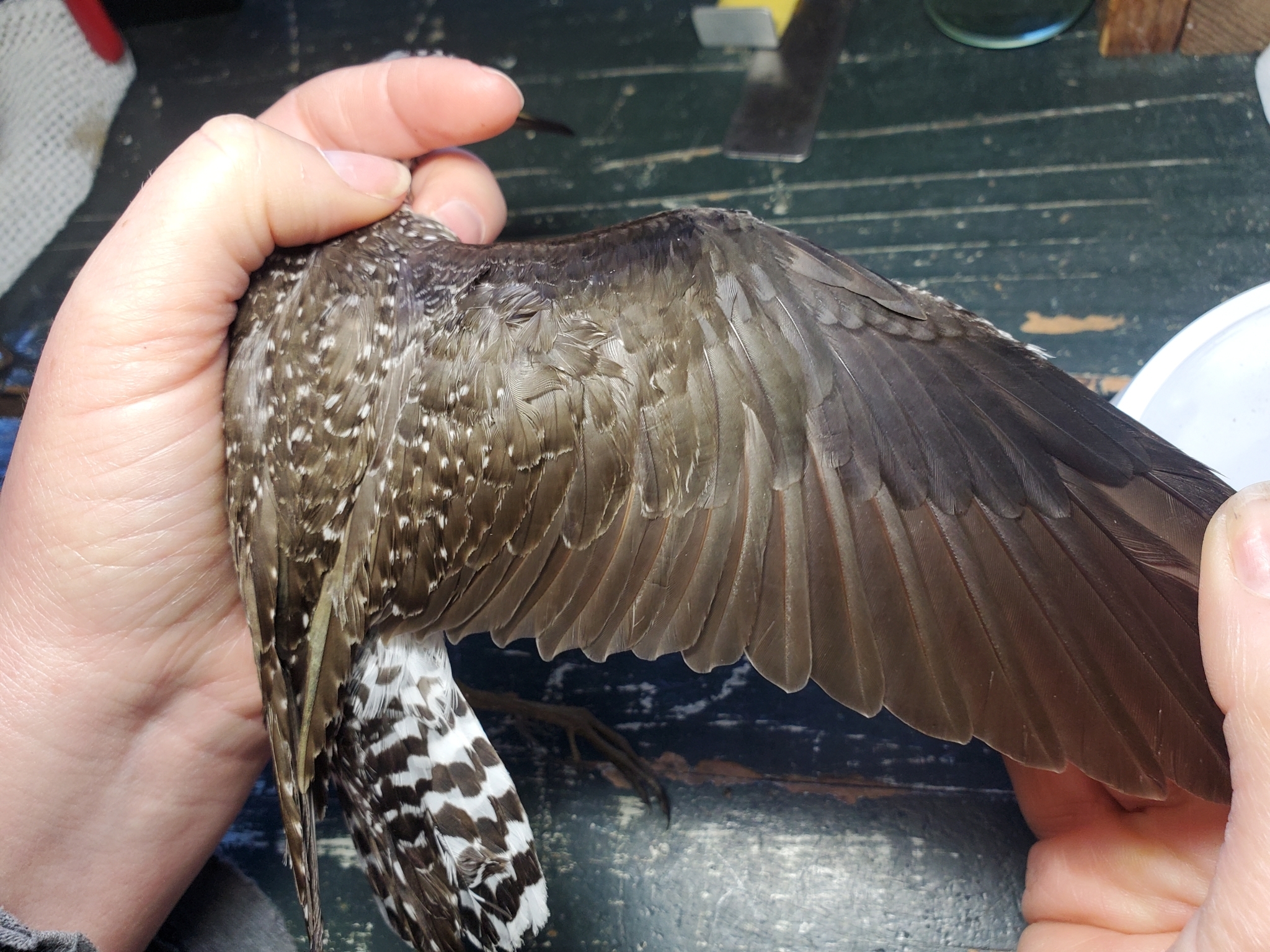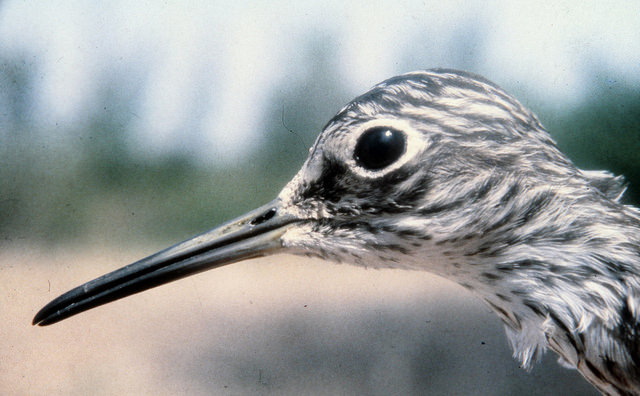Map Snapshot

























709 Records
Solitary Sandpiper in Montgomery Co., Maryland (5/4/2022). (c) Stephen John Davies, some rights reserved (CC BY-NC). - Stephen John Davies via iNaturalist.
Status
The Solitary Sandpiper is a familiar spring and fall migrant in Maryland. It rarely joins large shorebird flocks on open mudflats, marshes, or beaches. They instead visit small ponds, large puddles, and various freshwater habitats less likely to attract other shorebirds. They pass through Maryland in spring mostly in April and May on their way to northern forests, nearly all in Canada. There they nest near freshwater water bodies and bogs, but their nesting habits may be a surprise. The male identifies old nests of songbird species such as those of American Robin, Rusty Blackbird, Cedar Waxwing, and Canada Jay. The female confirms the best choice, removes old lining, and relines the nest.
The species passes through Maryland again in fall, this time on its way to wintering grounds in South America, Central America, and the Caribbean, sometimes at elevation up to about 4,000 feet. The northernmost normal wintering range includes Mexico and southern Texas.
Seasonality Snapshot
Source: Wikipedia
| Solitary sandpiper | |
|---|---|

| |
| Scientific classification | |
| Domain: | Eukaryota |
| Kingdom: | Animalia |
| Phylum: | Chordata |
| Class: | Aves |
| Order: | Charadriiformes |
| Family: | Scolopacidae |
| Genus: | Tringa |
| Species: | T. solitaria
|
| Binomial name | |
| Tringa solitaria Wilson, 1813
| |

| |
| Synonyms | |
|
Helodromas solitarius | |
The solitary sandpiper (Tringa solitaria) is a small shorebird. The genus name Tringa is the Neo-Latin name given to the green sandpiper by Aldrovandus in 1599 based on Ancient Greek trungas, a thrush-sized, white-rumped, tail-bobbing wading bird mentioned by Aristotle. The specific solitaria is Latin for "solitary" from solus, "alone".[2]
Description
[edit]This species measures 18–23 cm (7.1–9.1 in) long, with a wingspan up to 50 cm (20 in) and a body mass of 31–65 g (1.1–2.3 oz).[3][4] It is a dumpy wader with a dark green back, greyish head and breast and otherwise white underparts. It is obvious in flight, with wings dark above and below, and a dark rump and tail centre. The latter feature distinguishes it from the slightly larger and broader-winged, but otherwise very similar, green sandpiper (T. ochropus) of Europe and Asia, to which it is closely related.[5] The latter species has a brilliant white rump. In flight, the solitary sandpiper has a characteristic three-note whistle. They both have brown wings with little light dots, and a delicate but contrasting neck and chest pattern. In addition, both species nest in trees, unlike most other scolopacids.
Distribution and habitat
[edit]It breeds in woodlands across Alaska and Canada. It is a migratory bird, wintering in Central and South America, especially in the Amazon River basin, and the Caribbean. It is a very rare vagrant to western Europe, and goes there in the summer–autumn period.
Subspecies
[edit]The solitary sandpiper is split into two subspecies:
- T. s. cinnamomea, (Brewster, 1890): breeds in Alaska & western Canada
- T. s. solitaria, (Wilson, 1813): breeds from eastern British Columbia to Labrador


Behaviour
[edit]As its name indicates, the solitary sandpiper is not a gregarious species, usually seen alone during migration, although sometimes small numbers congregate in suitable feeding areas. The solitary sandpiper is very much a bird of fresh water, and is often found in sites, such as ditches, too restricted for other waders, which tend to like a clear all-round view.
Breeding
[edit]The sandpiper lays a clutch of 3–5 eggs in abandoned tree nests of songbird species, such as those of thrushes. The young birds are encouraged to drop to the ground soon after hatching.[6]
Feeding
[edit]Food is small invertebrates: insects (such as mosquito larvae, young midges, grasshoppers, caterpillars and beetles), small crustaceans and molluscs (such as snails extracted from their shells),[7] sometimes small frogs (primarily as tadpoles),[8] picked off the mud as the bird works steadily around the edges of its chosen pond.
References
[edit]- ^ BirdLife International (2018). "Tringa solitaria". IUCN Red List of Threatened Species. 2018: e.T22693239A130186218. doi:10.2305/IUCN.UK.2018-2.RLTS.T22693239A130186218.en. Retrieved 11 November 2021.
- ^ Jobling, James A (2010). The Helm Dictionary of Scientific Bird Names. London: Christopher Helm. pp. 359, 390. ISBN 978-1-4081-2501-4.
- ^ Solitary sandpiper at All about birds
- ^ CRC Handbook of Avian Body Masses by John B. Dunning Jr. (Editor). CRC Press (1992), ISBN 978-0-8493-4258-5.
- ^ Pereira, Sérgio Luiz; Baker, Allan J. (2005). "Multiple Gene Evidence for Parallel Evolution and Retention of Ancestral Morphological States in the Shanks (Charadriiformes: Scolopacidae)". The Condor. 107 (3): 514. doi:10.1650/0010-5422(2005)107[0514:MGEFPE]2.0.CO;2. ISSN 0010-5422.
- ^ Federation of Alberta Naturalists. (1992) Glen P. Semenchuk (ed.). The Atlas of Breeding Birds of Alberta. Edmonton, AB:Federation of Alberta Naturalists.
- ^ "Tringa solitaria (Solitary sandpiper)". Animal Diversity Web.
- ^ "Tringa solitaria (Solitary sandpiper)". Animal Diversity Web.
External links
[edit]- Solitary sandpiper - Tringa solitaria - USGS Patuxent Bird Identification InfoCenter
- Solitary sandpiper species account - Cornell Lab of Ornithology
- "Tringa solitaria". Avibase.
- "Solitary sandpiper media". Internet Bird Collection.
- Solitary sandpiper photo gallery at VIREO (Drexel University)
- Interactive range map of Tringa solitaria at IUCN Red List
